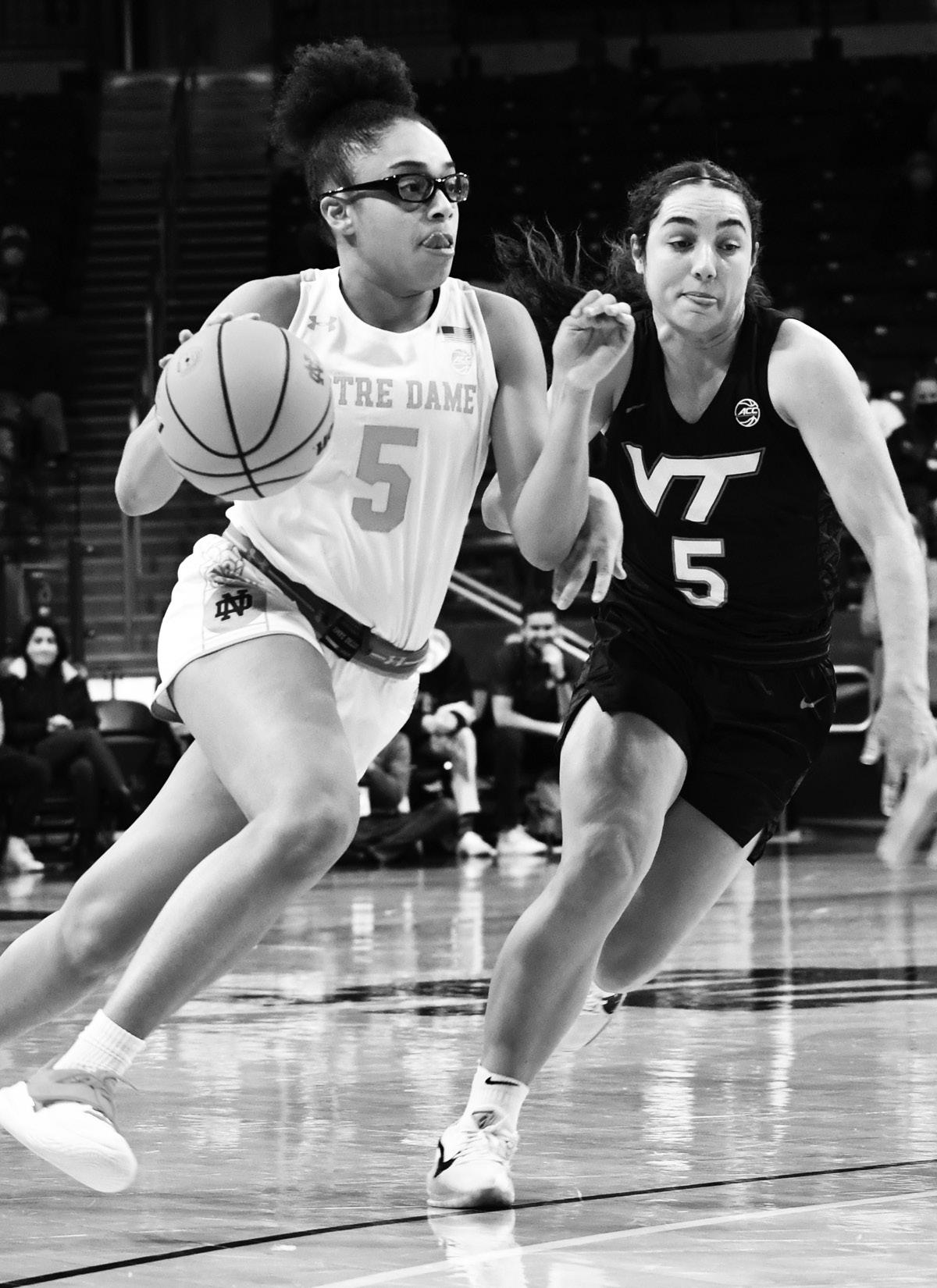‘O’Hara’s Heirs’: Business deans reflect on college’s history
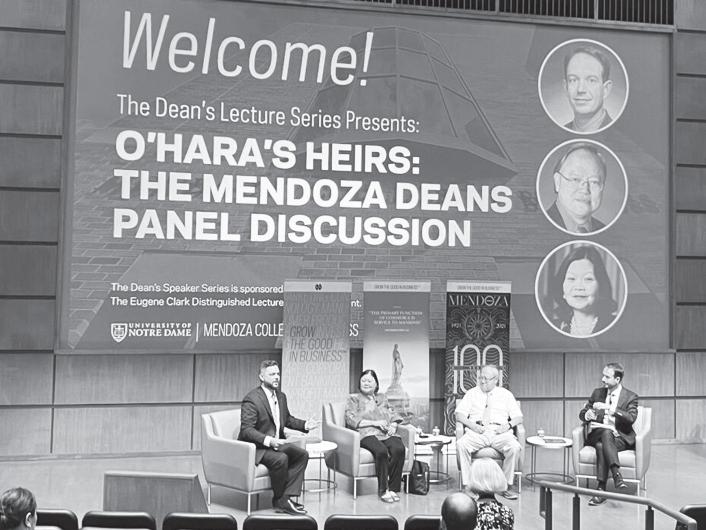
 By COLLEEN FARRELL news writer
By COLLEEN FARRELL news writer
Three past and current deans of the mendoza college of business spoke at a panel Tuesday about the history of the college and its future. current dean martijn cremers and former deans roger huang and carolyn woo spoke on the panel moderated by brett beasley. beasley and notre dame magazine editor kerry Temple co-authored the book “o’hara’s heirs: business education at notre dame, 1921-2021,” which was dis tributed to audience members.
after thanking the attendees for coming, beasley discussed mendoza’s past.
“i came across that particular quote from the ‘businessweek guide To The best business schools’ from the early 1990s. That
actually suggested instead of send ing white-collar criminals to pris on, maybe we should send them to
College holds forum on sexual assault, advocac y
By LIAM PRICE a ssociate news e ditorEditor’s note: This story includes mentions of sexual assault. A list of sexual assault reporting options and on-campus resources can be found on the Notre Dame, Saint Mary’s and Holy Cross websites.


saint mary’s president katie conboy and student body president angela martinez camacho led a conversation with members of the saint mary’s community Tuesday in carroll auditorium, discussing sexual violence prevention, response and survivor support.
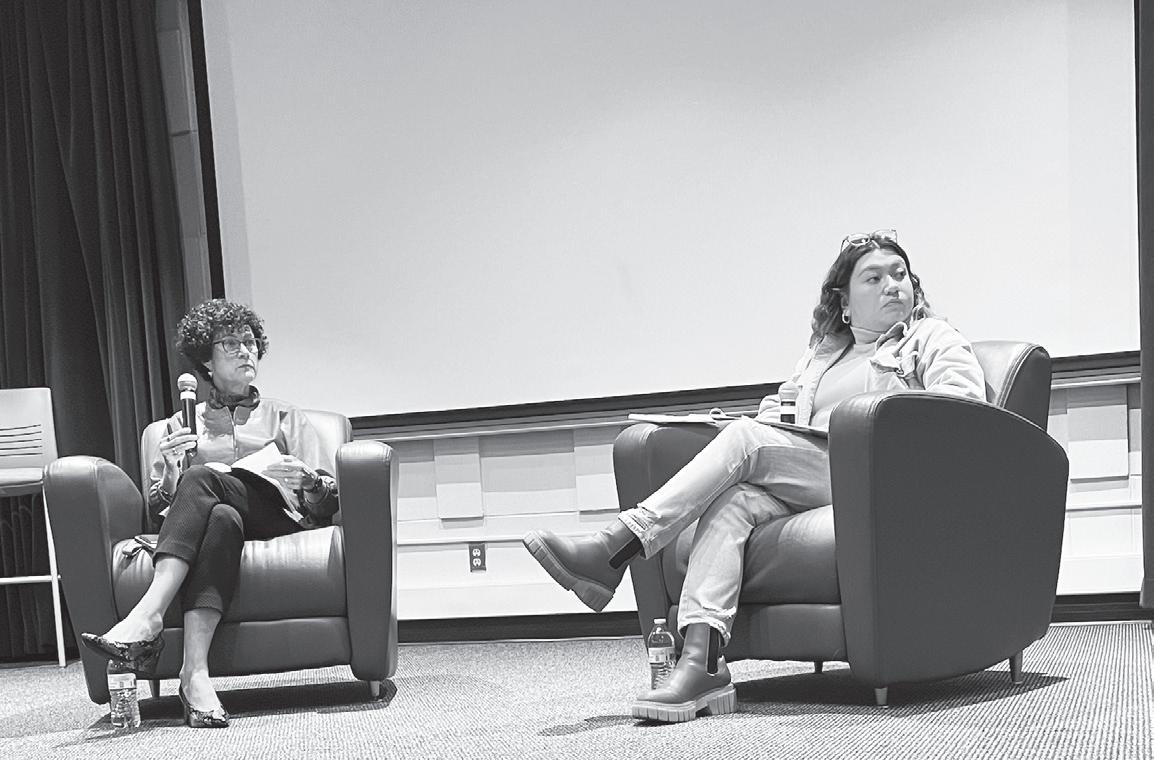
vice president for student en rollment and engagement lori Johnson began the event with opening remarks about the event’s goals and structure. she said it would feature an extended segment where students could ask questions, share personal stories and suggest improvements for the college in a confidential setting.
Johnson also praised the stu dents in the audience for their collective work in addressing the topic of sexual assault.
“i’m so pleased that we’re
having this conversation in pub lic,” Johnson said. “your genera tion has just done this exceptional job of the really hard and coura geous work of bringing these con versations into the public where they belong, helping to reduce stigma.”
in her opening statement, conboy said she first thought to host the event Friday morn ing after reading The observer’s editorial, which called tri-campus leaders to “not only promote their resources appropriately but earn
back trust.”
“when i read the editorial of The observer of that morning, it was for me really a call to action… that we have an issue in our tricampus community and that the presidents of the three colleges need to do more to listen to their own students,” conboy said.
The conversation, conboy said, aimed to raise dialogue and col lect direct feedback from students.
“This is a place where you
ND collaborates with Mayo Clinic
By BELLA LAUFENBERG a ssociate news e ditorw hat if science had the ability to dip into past genes to investigate a current ailment?
The results of a recent study, a collaboration be tween researchers at the n otre d ame genomics & bioinformatics core facility ( gbc F) and the m ayo c linic, mean that science might be headed in that direction for breast cancer and other diseases.
The paper, titled “Quality control recommendations for rnas eq using FF pe samples based on presequencing lab metrics
and post-sequencing bio informatics metrics,” was published in bmc m edical g enomics online s ept. 16 and has 18 contributors from the two organizations.
Humble beginnings
The years-long project started with a cohort of pa tient samples from a my d egnim, a specialized breast cancer surgeon and re searcher at the m ayo c linic. d egnim, a graduate of n otre d ame herself, had old be nign samples from a subset of her patients that later de veloped breast cancer.
“ o ur interest is in looking
Students travel to Vegas for game
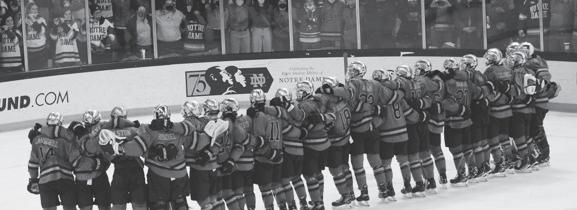 By KEIRA STENSON news writer
By KEIRA STENSON news writer
The annual shamrock series game took place this past week end in l as vegas, and students and fans traveled to a llegiant stadium to watch the Fighting i rish take on byu
“The energy at the game was super electrifying,” first-year bella vasquez, who attended the game with her family, said.
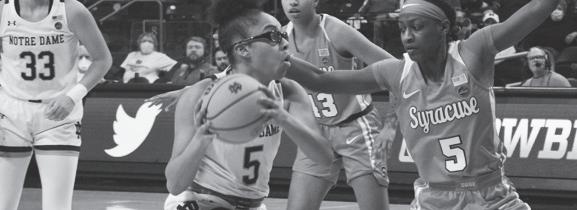
“everyone was so excited to be there.” e lizabeth r hee, a firstyear engineering student in pasquerilla e ast hall, echoed her sentiments.
“The energy was wild,” she said. both r hee and vasquez re marked on the strength of the notre dame presence, saying
Journalist, alum launches book
By KATIE MUCHNICK news writerkatherine corcoran ’81, a freelance journalist and former visiting fellow for the kellogg institute, returned to notre dame Tuesday to launch her new book: “in the mouth of the wolf: a murder, a cover-up, and the True cost of silencing the press.”
corcoran served as the
associated press (ap) bureau chief for mexico and central a merica from 2010 to 2016. This is the first stop on her book tour. during her time as a kellogg fellow, corcoran worked closely with political science professor guillermo Trejo, who spoke on a panel with corcoran. he runs the notre dame violence and
Book
Transitional Justice Lab, and much of his research focuses on transitional violence and human rights in Latin america.
a lejandra Xanic, a Pulitzerprize-winning investigative journalist from mexico, joined the panel via Zoom and of fered commentary on the book. american studies professor emeritus robert schmuhl mod erated the discussion.
“in the mouth of the Wolf” investigates the assassination of journalist regina martinez as she was on the verge of ex posing government corruption within the mexican government. corcoran said that her experi ence as a journalist in mexico and as one of martinez’s con temporaries inspired her to write the book.
“sometimes writers say that they don’t find a story; the story finds them. and that was truly the case for me in this particular instance,” corcoran said.
on her first day as bureau chief in mexico, the associated Press received a threat from a drug cartel that forced corcoran to make key decisions about cor respondent security. a few days later, a journalist was murdered in the city of ciudad Juarez.
“from then on, one of the big topics for me to handle was the safety and the attacks on jour nalists in mexico,” corcoran said.
corcoran said that attacks on journalists in mexico were a new phenomenon at that time, though they’ve become more frequent over the last decade. she recalled spending many nights awake as bureau chief, worrying about correspondents in the field.
regina martinez was mur dered inside her home in april 2012. corcoran remembers this as a turning point because this was not just a faceless,
local journalist being murdered.
Though corcoran did not know martinez personally, she had tried to hire her for a story and greatly respected her work.
“she had this sort of investi gative bend,” corcoran said of martinez. “i thought, if she had been [in the U.s.], she would have uncovered some scandals, she would probably win some prizes, she would have been fair ly well known.”
in mexico, martinez was not celebrated — in fact, her re porting was often thwarted. corcoran said that martinez’s bravery in the face of pushback inspired her to investigate the death.
“it was clear to me that [martinez’s murder] was a cam paign to silence the truth. before her death, the government did a pretty good job of disseminat ing bad information about these journalists and kind of impli cating that they were part of the drug cartels or they were being paid off, and that’s why they got killed,” corcoran said
This was not the case for martinez’s assassination. she was a well-known journalist who reported for the national maga zine, “Proceso,” which is based in mexico city.
“i started to notice that the most dangerous countries in the world for journalists were democracies like mexico, where they had the most killings and the most attacks on journalists,” corcoran said.
Trejo provided the context for the situation in mexico, likening it to a war. Though mexico is offi cially at peace, he said, a quarter of a million people have died in this conflict. more than 105,000 people have disappeared, a number that far outstrips the number of disappearances in argentina or chile under recog nized dictatorships.
Trejo said that martinez and corcoran were reporting from the same framework in mexico, something he calls the “gray
zone of criminality.” This is not conventional white-collar cor ruption, but a highly organized system where government of ficials and members of the mili tary collude with drug cartels and criminal groups.
“mexico has a 99% impunity rate in this type of selective as sassinations. That means that we know practically nothing about the perpetrators of many of these journalists,” Trejo said. “This book … starts digging holes in mexico’s giant wall of impunity.”
Xanic thanked corcoran for the book, saying that it taught her a lot about martinez’s death as well as the craft of reporting.
“it would be great if people in the public could read this book because i think it will explain what we as reporters conceive as our role in society and democ racy,” Xanic said.
corcoran reflected on the dif ficulties she faced when writing the book, reporting in a country that continues to be dangerous for journalists. fifteen journal ists have been killed in mexico this year, an increase from years past. The process of writing the book took six years, in part be cause corcoran had to navigate threats against her and the peo ple providing her information.
“i was ready to quit right up to the very end,” corcoran said. despite these obstacles, corcoran said she hopes the book is a reminder of the impor tance of a free press. The recent attacks on the press in the U.s reminded corcoran of the narra tives that Latin american “cau dillos” used to maintain control.
“They actually have an official count of attacks on the press in the United states, which didn’t exist five years ago, six years ago,” corcoran said. “Where does this road go if we … continue to control and deny the free press? That’s what the book is about.”
Contact Katie Munchnick at kmuchnic@nd.edu
Forum
should feel that when some thing isn’t working for you, you can bring it forward to your ad ministration and we will be re sponsive to that,” conboy said. she added that she wanted to learn more about “how we can do better, what is working, what is not working.”
conboy also acknowledged that she was aware of recent developments on social media regarding student reports of sexual assault, despite not being able to discuss specific cases.
“i’ve also been aware and brought up to speed on the social media that has been a source for some of our students and students from the other col leges to start telling their own stories,” she said.
martinez camacho said she didn’t want her term as student body president to end with out having sparked progress in combatting sexual violence. by openly conversing with the saint mary’s community, she said, campus leaders could improve the college’s advocacy system.
“This is an effort that involves all parties, so let’s make it hap pen,” she said.
following the opening state ments, the conversation opened to the audience and students shared personal experiences, asked questions and offered rec ommendations on how to better handle the problem of sexual violence in the tri-campus.
after the event, conboy told The observer that she felt the event was successful because of the input from the students who spoke in the conversation.
“There were concrete sugges tions that students gave us that are not hard to implement,” she said. “We just need to do it quickly and make it our focus.”
Contact Liam Price at lprice3@nd.eduMendoza
they can go out and be reformed and be better business people. so that’s the tradition that i think we’re all heirs to,” beasley said.
beasley asked the panelists about what it was like to “cultivate … reputation and ethical lead ership,” continuing mendoza’s legacy.
“i think it’s just part of the mendoza brand, and it comes with all the rest of the mission and therefore the students are familiar with it when they are here. The faculty are passionate about it. and we have increased our vision. We have a University that helps us with developing his mission statement,” huang, who served as dean from 2013 to 2018, said.
Woo, dean from 1997 to 2011, said she believes it was an effort of more than a few at the top.
“When i think about leadership, i think of all the people who are in these chairs. We didn’t do what we did because of one person. it was a whole school which understood what we stood for,” she said.
Woo thanked her colleagues and mentioned the bond she had with her female colleagues.
“There is an incredible sister hood here,” Woo said.
beasley asked the panelists what success meant to them through good and bad times and how the college should continue to be successful.
Woo recalled hearing another dean from a different school say that success for a business school was to change the earning curve of the students. she disagreed with that. she emphasized the importance of succeeding on our own terms.
“i am going to show that we will succeed, but on our own terms. We will play with the big boys, and we will lose sometimes, win some times, but when we win, it will be on our own terms,” Woo said.
When asked about the met rics involved in success and how students’ success is measured, cremers said he focuses on how much alumni contribute to the world and back to the school.
“my answer would be we want to try to think about how, as stu dents go out, how much do they actually contribute, how well do they operate and how well do they compete. in my mind, in that or der. i think we have good indica tors for those three,” cremers said. beasley mentioned that the business school has come a long way in 100 years, asking the deans if they have a goal they would like to aim for in the next 100 years.
“i think my moonshot direction would be to become much more global, especially be more focused on the global south,” cremers said.
“i think for me, the moonshot would be sort of like how do you optimize the welfare of people?” Woo said.
The panel ended after the deans discussed the fond memories they have from their time at notre dame.
Vegas
were pretty evenly split between
benjamin nelson, a senior science business major from Keough hall added, “it was kind of more like a bowl game than like a normal game.”
Junior biology major heather roland discussed the experi ence of being in an nFL stadium, as a llegiant is home to the Las vegas raiders.
“my dad’s a huge raiders fan, so playing in the new stadium was … incredible,” roland said.
students said that although it wasn’t quite the same as being at home in notre dame stadium, the distance couldn’t derail some classic irish traditions. Fans kept the spirit alive by doing touch down push ups to celebrate the team’s success.
“i was glad we did the a lma mater, because we don’t always do that at away games,” roland said.
as a member of the march ing band, r hee helped maintain this beloved tradition and spoke about how the group’s routine compared to normal.
“Times are mostly the same,” she said. “We have to wake up at a certain time, we have to rehearse.”
however, she noted several key differences as well.
“We didn’t have any march outs,” she remarked, referencing the band’s tradition of march ing from the Golden dome to re hearsal on Fridays before game days.

“We just took a bus to travel to the place we needed to rehearse at,” she said.
Fan Fest, which took place in the parking lot, also replaced the classic concert on the steps, though r hee said that the fans still brought excitement.
“it was mostly the same energy, same steps,” she summarized.
roland attended as a student manager for the football team.
“i work for defense, and they played very well, so i was very happy with that,” she said, continuing, “i was really glad that i got to go, very thankful for the opportunities i’ve got ten through my job as a student manager.”
students who spoke with The observer also discussed the environment throughout Las vegas, seeing fellow students and fans throughout the city.
“You would see people out and about in notre dame shirts,” nelson said.
“i would be walking around and [fans] would just be like, ‘Go irish!’” r hee added.
vasquez spoke to this sense of community even so far from campus, emphasizing “how cool it was to see such a big turnout for our team and the support and the love for our school.” nelson seemed to agree, saying that despite the travel, it was “100% worth it.”
back at these benign biop sies [the women] had years before they ever developed the cancer and comparing the biopsies of the women who did get cancer to those who didn’t,” she explained.
“What are the differences, the molecular differences in the tissue that would give us some clues?”
d egnim added that hav ing samples from the same person at two different time periods can give insights into possible somatic muta tions, instead of hereditary, germline mutations that are commonly studied such as the brca 1 and 2 in breast cancer.
“ m ost women who get breast cancer don’t have a brca mutation or anoth er genetic mutation. m ost women who get breast can cer have, we think, somatic mutations — cumulative errors in genome that then translate into errors in cell proliferation genes and cause certain cells that have these mutations to prolifer ate out of control.”
d egnim said she realized that she had a very unique opportunity to almost liter ally look back in time to a period before the cancer de veloped; however, the sam ples were formalin-fixed and paraffin-embedded, a kind of preservation tech nique that allowed for the degradation of the dna and rna molecules needed for sequencing.
d egnim brought her prob lem to a colleague, who connected her to the n otre d ame G bc F. There, director m ichael Pfrender, assistant director m elissa s tephens and technical scientist b rent h arker were up to the
challenge.
“They were willing to take this project to push the lim its of how successfully we can do rna sequencing on these really, really old tis sues,” d egnim said.
The legwork
a ccording to s tephens, the partnership started in 2017, took a small break dur ing the covid -19 pandemic and the work for the paper was finally finished in 2021. s he also noted that the G bc F worked closely with d erek r adisky, another col laborator on the paper and a cancer biology researcher at the clinic.
While d egnim, r adisky and others dealt with larger brainstorming and clini cal applications, the col laborators at the G bc F did a majority of the legwork on the project — including rna seq, a specialty of the center.
s tephens explained that rna seq is a technique used to quantify the amount of rna transcribed and se quences using next genera tion sequencing.
“Using rna seq allows you to look at differences — what’s turned on, what’s turned off in these genes — and get information about the function of the genes,” she said. “[ rna seq] allows you to better understand the underlying biology of, in this case, a particular disease.”
The issue, s tephens said, was not with the samples themselves but with the method of rna extraction and the manner of enrich ing, or marking, the strands of interest.
“You have to use these other methods to try and get the coding transcriptome out [of the samples] with out using the traditional
approaches,” she said.
s tephens outlined two main methods that she and h arker used in the paper: the ribosomal depletion method or the sequence capture specific approach.
The conclusion drawn in the paper was that the exome capture and enrichment ap proach yielded better results than the depletion method.
a t the end of a long tri als and error period to fig ure out the best method,
Pfrender explained that there was a need to figure out which samples’ data was reliable or “trustworthy.”
“ i n a whole range of sam ples, some were in pret ty good shape, and some were in really rough shape.
breast cancer, s tephens said she believed the recommen dations they created are vi able for all FFP e samples.
Pfrender added in his be lief that the standards and methods developed could be used to go back and study FFP e samples from 30 years into the past and beyond.
Into the future
m oving forward, d egnim told The o bserver that they are currently in the process of analyzing the results of the rna seq.
s
o, the big challenge for us was to try to figure out how to quantify that so we know which ones were safe to move forward,” he said. “The statisticians re ally took a harsh look at the data to try to figure out ‘what’s the roadmap? where are those cut offs?’”
The paper’s conclusion consisted of method recom mendations on how to get usable data and guidance of how to judge good and bad samples.
Pfrender also took the opportunity to talk up the work ethic and patience of the center’s researchers.
“
i t’s really quite an accomplishment, and it’s completely up to their ex pertise and infinite patience trying to work through this project. i think most facilities would have just given up,” he said. “You lose a lot of potentially very im portant information … these kinds of samples are quite rare and really precious.” a lthough the samples were localized to breast tissue and the study about
“The first step was just, ‘ c an we trust this data?’” she explained. “ n ow we’re analyzing the data in those samples that pass the qual ity metrics to find out what the differences are in gene expression in women who develop cancer in the fu ture and the women who did not.”
d egnim said she hopes to identify some biomark er, causative of the cancer or otherwise, that she can incorporate into future re search endeavors and more studies.
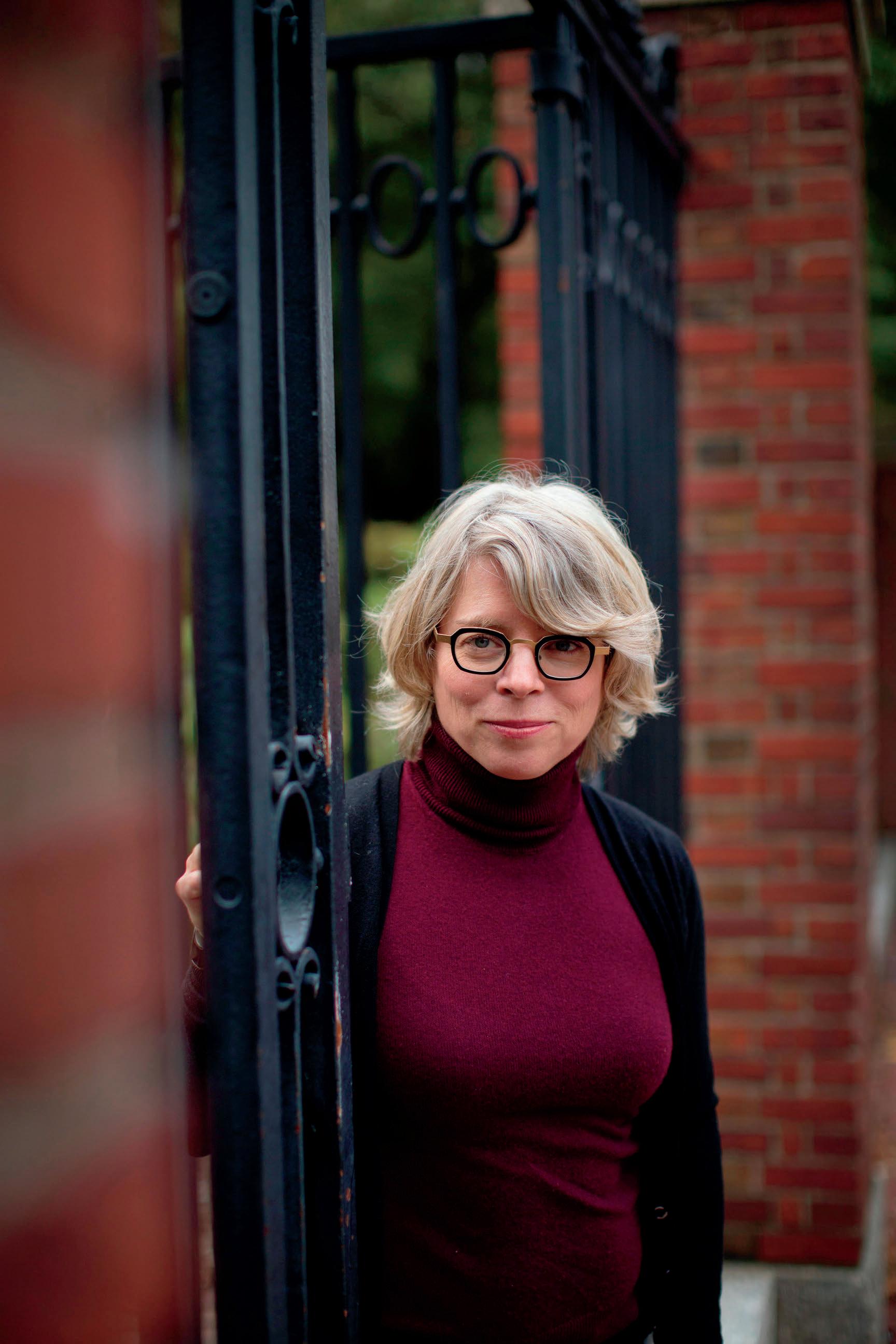
“[This research] is a dis covery effort to try to find new factors that either may predispose to breast cancer or will tell us that if a woman is expressing these changes in their rna , they will be at an increased risk to get a breast cancer,” d egnim mentioned.
a graduate of n otre d ame herself, d egnim noted that she was really excited to work with the University on this project.
“ i t’s been really very thrilling and very endear ing for me to be able to cir cle back now and have this collaboration with my alma mater,” she said.
Contact Bella Laufenberg at ilaufenb@nd.edund off-campus living options over the years
By SPENCER KELLY, CADE CZARNECKI, THOMAS DOBBS and AVERY POLKING From the a rchives researchers
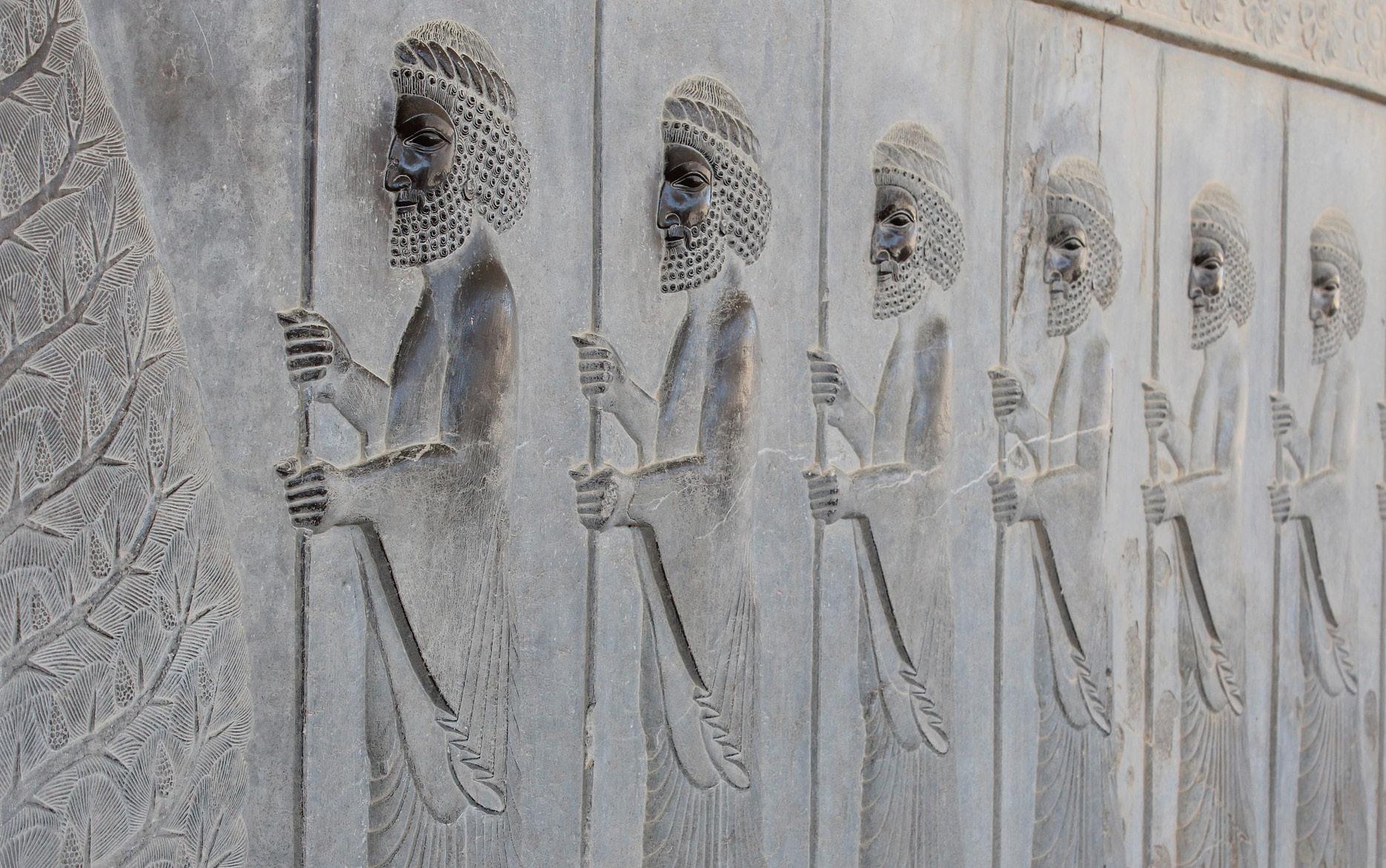
Though the fall semester is not yet halfway over, The observer’s recent off-campus housing guide notes that “as october arrives, sophomores and juniors (and even first-years) begin to think about their off-campus migration.”
To add some historical perspec tive to this trendy topic, From the archives looked back at off-cam pus living over the years at notre dame and saint mary’s. The stillrelevant concerns and opinions in these blurbs can aid potential off-campus migrants in their hous ing decisions, while the stories of off-campus parties contain enter taining insights for anyone who may spend a saturday night in one of south bend’s numerous student abodes.
Off-campus housing trends and student concerns Oct. 15, 1990 | Oct. 16, 1990 | Oct. 17, 1990 | Kate Manuel | Researched by Cade Czarnecki
in a three-part series, the observer examined the state of off-campus housing in the 1990s, highlighting contemporary trends but also revealing student opinions that remain pertinent today.
The 1990-91 school year saw an uptick in students moving off-campus. There were 1,157 undergraduates that declined on-campus housing options and chose to seek out their own offcampus arrangements, up from
1,085 the previous year.
a closer look at the demographic split reveals an interesting story: almost five times as many senior males moved off-campus as senior females. surprisingly, this was ac tually representative of a decreas ing gap between off-campus men and women.
When asked why she chose to move off campus, cecelia burger, a senior woman, cited a desire for independence and respite: “i want to be on my own. it does give me a place to physically remove myself from the stress of campus.”
Yet, burger also noted that there are drawbacks of moving off cam pus, such as the social life. she mused, “if you really want to be around people all the time, don’t move off campus.” This sentiment was echoed by many. off-campus students shared that they often felt isolated from on-campus students and events.
The other main consideration for off-campus students was security. Looking to address some of these concerns, observer news writer Kate manuel reached out to notre dame’s security department.
The department explained that notre dame was not “directly re sponsible” for the security of offcampus students. notre dame security believed its role in the lives of off-campus students was only to assist local law enforcement if nec essary. still, notre dame security made an effort to advise off-cam pus students of best practices.
a series of mailings were sent out to off-campus undergraduates reminding them of security prac tices, such as looking for “hidden
areas” where burglars could hide and contacting the police depart ment before they leave for breaks. The latter bit of information was shared because “[Local police de partments] will put your house on a list to be checked at least three times in a twenty-four hour period: one time every eight-hour shift at a minimum.”
Today, off-campus students con tinue to embrace their option to live more independently off cam pus. however, the aforementioned concerns of social life and security remain important considerations.
Inside the SMC off-campus housing campaign March 19, 1969 | Ann Conway | Dec. 10, 1969 | Jim Hayes | Jan. 16, 1970 | Observer Staff | March 17, 1970 | Prue Wear | Researched by Thomas Dobbs
Lacking the off-campus option their notre dame neighbors had, a student-led campaign to allow offcampus housing was first initiated at saint mary’s during the student body President race in march 1969. as a commitment to the student body, candidate susan Turnbull pledged that “off-campus housing be approved and in use by 1970.”
The following year, Turnbull, now student body President, met her campaign promise and launched a petition to the board of Trustees on dec. 10, 1969, to convince the board to “re-evaluate their position against off-campus housing.”
The proposal addressed a rel evant issue for saint mary’s: given an operational deficit of $460,015 in 1969, saint mary’s was appar ently considering “admitting more
students than can be comfortably housed.”
allowing off-campus housing, the petition argued, would enable the school to grow its student popu lation and tuition revenue without having to construct more dorms or force some students into crowded conditions.
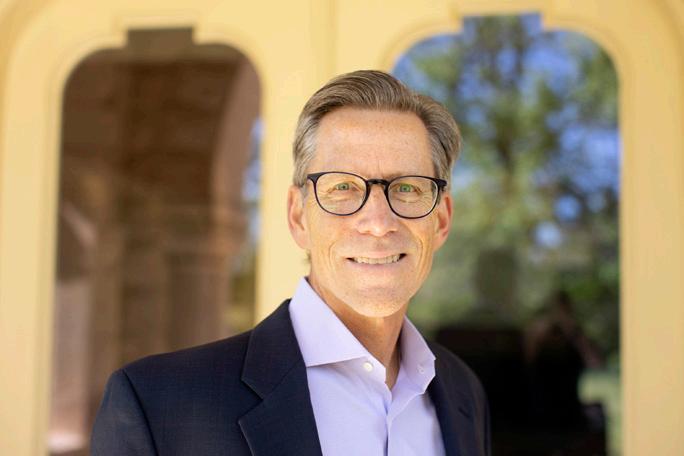
in a follow-up editorial, pro ponents further claimed that offcampus housing would “allow for greater opportunity for individual freedom and responsibility.”
anticipating safety as an obvi ous concern with off-campus liv ing, advocates pointed out the lack of safety on the saint mary’s cam pus. They claimed that off-cam pus housing “should be much less suspect than saint mary’s where just this past christmas campus security was unable to halt the nightly theft of 30-foot trees and where numerous assaults, attempt ed and completed, have occurred each year.”
although the board of Trustees offered no statement on the state of campus safety, the board passed the off-campus housing proposal on march 17, 1970, as an experi mental one-year trial. This policy ultimately proved permanent and remains an option for seniors today.
Off-campus parties encoun ter police crackdown Sept. 5, 1984 | John Lavelle |
Researched by Avery Polkingin the 1980s, several stories of unruly off-campus parties made observer headlines and resulted in stricter police regulations.
one article from september 1984
detailed the “large, out of control parties” of up to 600-700 people which police deemed intolerable. This specific instance involved sev en on-the-scene arrests and two more the following morning.
officers insisted this was ordi nary enforcement with no extra pressure specifically on off-campus parties, despite a new alcohol policy at notre dame which seemed con nected to the increase in arrests. however, it appears that actions may draw clearer conclusions than words.
The next year, the observer cov ered a direct warning of this in creased pressure by the police. it involved noise-measuring devices to determine a party’s level of pub lic disturbance. over 65 decibels at night and 72 decibels during the day warranted tickets for individu als involved.
south bend police officers seemed more benign in their com munications than students may have liked to admit, giving recom mendations on ways to abate trou ble on the weekends. some advice included calling substations to in form them of party details before hand, but no insight was gathered on students’ receptiveness to these comments.
another off-campus incident in the 1980s that drew particular attention was when two resident assistants were fired for supplying alcohol to underage students. From the ras’ perspectives, though, their punishment was too severe.
For context, the ras were at a party where they started selling empty cups to other, often under age, students who would then fill them with alcohol. one of the stu dents relieved of their ra position defended themselves, saying they didn’t think that what they were doing was illegal. another defense was the fact that neither of them was actually drinking that night, with one claiming, “all i had was a glass of milk.”
despite their objections, though, these two students were fired from their duties as resident assis tants, their relationship with the University seeming more like that of employees rather than students in this situation.
Today’s off-campus parties seem devoid of similarly dramatic sce narios, so these stories provide a glimpse into an apparently turbu lent time. but a more salient insight can also be gleaned from these sit uations: be wary of ill-advised ac tions from people who drink milk at parties.
Contact Spencer Kelly at skelly25@nd.edu, Cade Czarnecki at cczarne3@nd.edu, Thomas Dobbs at tdobbs@nd.edu and Avery Polking at apolking@nd.edu
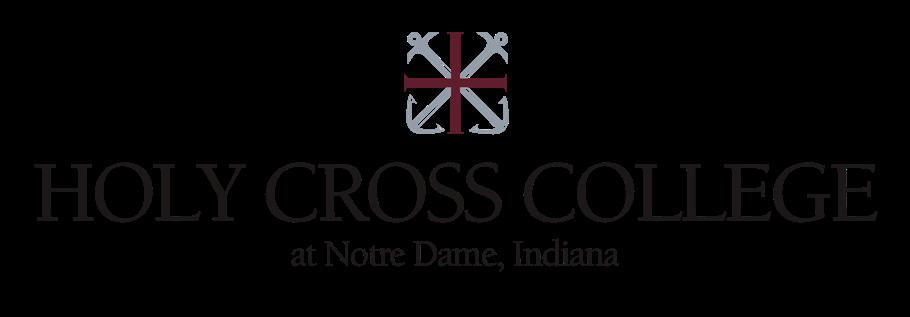
are cordially invited to
“The Open Circle Through a Biblical Lens: What You Didn’t (But Should) Know About the Persian Period”
By Richard Bautch, Ph.D. Interim Executive Director of the Holy Cross Institute at St. Edward’s University
The wizard of loneliness
Claire Lyons Associate s cene e ditormy favorite moment in comedy television history hap pens in the “smokers Allowed” episode of “nathan for You.” If you haven’t seen the show, the general premise is a spoof on reality T v shows like “The bachelor” and “Undercover boss.” comedian nathan Fielder contacts small-business owners to be on the show under the guise of a serious business consultant but instead proposes ridiculous business plans. In this particular episode, Fielder helps a bar owner exploit a loophole about indoor smoking by turning her bar into an experimental theater performance.
during a rehearsal with local actors and actresses he hired, the recently-divorced Fielder pulls an actress aside and claims her performance as a romantic interest isn’t convincing enough. “You see, I’m not believing you at this point,” he says. he asks to try an exercise. he asks her to look into his eyes and tell him she loves him. he asks again. Then, he asks again and again. Again. Again. Again. h is voice gets softer each time until it is barely a whisper. he swallows hard in the pauses. he melts a little into his chair. You get the sense that Fielder could keep asking the actress to say “I love you” until the words entirely lose their meaning. The joke certainly goes on for longer than it has to. she only stops to tell Fielder he has tears in his eyes. “That felt real to me,” he says. notice how he says real. notice how he doesn’t say he believes it.
I like this scene precisely because it isn’t funny. Watching Fielder at this moment is like viciously and sav agely pointing a finger at my own reflection. The “I love you” loop plays over and over in my head in class, late at night as I stare up at the ceiling in the dark, during supper hour as I gruelingly gnaw at whatever meal that’s served up to me in the dining hall. In short, it hit a nerve, and I’m still unsure of how to write about it.
Fielder is often lovingly referred to as “the wizard of loneliness” by fans, based on a mean-spirited joke made by the show’s private investigator. “You remind me of the wizard of loneliness because you’re your own self — your own wizard,” the investigator says. “Look at you…You have no friends.” Although I have friends and I’m sure Fielder does as well, I can’t help but feel like the wizard of loneli ness. I can count on my fingers the number of people I feel like I can really talk to. most of them are on the other side of the globe, studying abroad. my father and I don’t call anymore. Part of me sometimes wonders if there is some fundamental aspect of my personality that drives people away, but I don’t entirely mind being alone. I spent last summer white-water rafting, raving at music festi vals, riding my bike to Trader Joe’s and making friends on the c TA trains all by myself. so, I ask: What makes being “your own self” so incompatible with being with “having friends”?
I feel like a lot of us feel that love is conditional. We be lieve we must be more successful, more outgoing, more in telligent, etc. for us to matter. We must perform in certain ways to fit in. Part of us cringes at Fielder’s awkwardness, but can we really blame the wizard of loneliness for asking for love? It’s such an incredibly universal human impulse. everybody knows the actress’s answer is a performance, even Fielder. In a way, it makes us more comfortable. but Fielder isn’t performing anymore. he’s genuinely being himself for a moment. In fact, his authenticity punctures through the show’s layers of artifice. he asks the question that we all secretly want to ask. It’s raw and unsettling. he doesn’t believe her, but he doesn’t care. It feels real enough to him.
maybe that’s what matters: having the authenticity of asking instead of receiving, having the courage to be the wizard of loneliness instead of anybody else.
You can contact Claire at clyons3@nd.edu.
The views expressed in this Inside Column are those of the au thor and not necessarily those of The Observer.
Yellow journalism, read all over
media is still prevalent.
Elizabeth Prater sparkI made a pact with myself this year to read ac tively and more widely about the news. This may be surprising for someone who has both written and worked for The observer since my freshman year at notre dame. however, I found myself barely being able to keep up with my seminar readings, rooted in the classical world, and failed to acquaint myself with contemporary and global issues.
I think my reluctance to engage in current events wasn’t a matter of apathy or a jaded re ception to political reporting, but rather, fatigue from the saturation of varying media content. headlines and infographics with attention-grab bing statistics filled my news feeds and social me dia. Instead of viewing articles as an informational resource, I found myself gauging the calculated colors, fonts and word choice that enticed readers to click. As a marketing major, I understand that marketing is all about changing the perception of a concept or idea. but to what extent can the per ceptions change before it alters the integrity of the content?
Lindsay Juarez is the director of Irrational Labs, an organization that uses behavioral sci ence insights to drive innovation and growth. she presented her research to my consumer and organizational buyer behavior class, demonstrat ing how behavioral science was used to reduce the spread of misinformation on TikTok.
TikTok came to the lab believing it had a re sponsibility to reduce the spread of misinforma tion. Prompts were placed on content that was not able to be verified by fact-checkers, and they were flagged as “unsubstantiated content.” As such, users would be given three seconds of the pop-up to move forward with sharing the content even though it was unverified. The implementation of prompts “reduced shares by 24% when compared to a control group.”
They explained the behavioral science behind the phenomenon, using layman’s terms exploring humans’ “hot” and “cold” states. media platforms such as TikTok play a role in activating users’ hot states, in which they are overwhelmed by the “power of emotion” and quickly interpret and share content. by placing prompts that indicated that content was unverifiable, TikTok was able to slow down this “hot state” and allow people to become more logical and deliberate with repost ing content.
The phenomenon of inciting emotions and “hot states” in behavioral science reminds me of the yellow journalism movement, noted for its empha sis on sensationalism and exaggeration. It is par ticularly notable in its instrumental use of inciting public sentiment against the spanish right before the start of the spanish-American War.
newspaper publishers Joseph Pulitzer and William randolph hearst used this style of jour nalism by “accentuating the harshness of spanish rule” or even printing false stories that drove ad versarial attitudes. The result was an increase in sales of the papers and a furthering of the combat ive climate surrounding U.s. expansion.
The peak of this phenomenon was in 1898 when the Uss maine, a battleship sunk in the havana harbor. While the origins of the explosion were unknown, newspapers in the U.s. published ru mors that enemies had plotted to sink the ship.
Although yellow journalism did not create antispanish sentiment, it certainly fanned the flames of international tension. Though the term is most associated with political movements in the late 19th century, sensationalism in journalism and
The observer’s mantra is “to uncover the truth, and report it accurately.” The commitment to ac curacy in reporting is essential to the world of journalism, but, at the same time, media channels are businesses. And attractive headlines and en ticing titles sell.
sensationalism in journalism in modern times may not always be as extreme as it was previously, due to more rigorous fact-checking and more cred ibility within certain publishers. but the implicit biases that sway our perceptions of certain issues remain. I don’t think these biases are inherently bad; they are a part of human nature and simply reveal our inclinations and desires. however, it’s important to recognize and analyze the origins of the pieces with which we interact, acknowledging the crucial human thought that creates differ ences in the perceptions and reporting of a single event. These variations can be presented in a twofold manner: the content itself, and the way we market and present the content to readers.
Instant gratification is ever-present in public media channels that are targeted toward younger demographics, such as social media. however, research by Irrational Labs and other behavioral scientists encourages me to consider the impor tance of the content and media that I consume and share. sensationalism is not merely spread by bad intentions, but rather, built upon biases or quick inferences that may not be supported.
Taking a step back when evaluating a resource, particularly when not attached to an accredited site, requires effort and time, but makes us betterinformed consumers of information.
I think it’s easy to dismiss our posts and retweets as a lack of personal significance. We think that the words we share and the things we declare have little-to-no weight. however, if I’ve learned anything from having a column, it’s that we implicitly share a responsibility to secure ac curacy and intentionality in the things we publish and reshare.
From the comments and emails that I’ve re ceived from professors and students alike, I’ve realized that my reach is far greater than my inner circle. It encompasses an invisible thread of con nections I could have never predicted. While this is an exciting byproduct of the nomadic nature of words, at the same time, it means I have a fur ther responsibility to make sure the things I share represent both honest intentions and truthful findings.
I’m not trying to inflate my role in democratic discourse. I know that there’s very little chance that people are hanging on to my words by an in visible thread. however, I believe that intentional ity and attentiveness, no matter the grandeur or impact, is integral to this discussion. If every time we post, we pause beforehand and take a moment to reflect, maybe we’ll foster an environment for better-informed citizens. maybe if we examine the content we consume and share a little deeper, we’ll learn more about the world, and inevitability, about ourselves.
Elizabeth Prater is a junior at Notre Dame double majoring in marketing and the Program of Liberal Studies (great books). She is interested in the cultur al implications of analyzing classics and literature under a contemporary lens. When she isn’t writing, she loves playing the violin, hiking in the PNW, go ing to concerts with friends and offering unsolicited book recommendations. Elizabeth always appreci ates hearing from readers, so feel free to reach out to eprater@nd.edu or @elizabethlianap on Twitter.
The views expressed in this column are those of the author and not necessarily those of The Observer.
The funk is necessary
Kate CasperI knew I was in a funk when I took myself on a lake walk last saturday. While the cause was unclear at the time, I knew for sure my funk was triggered by something. specifically, I knew it was triggered by my self-imposed “snapchat detox”: I would allow myself only 15 minutes of snapchat per day and see how it made me feel.
The idea for the detox emerged from a funk within itself. during a Wednesday afternoon dining hall lunch, my friend told me I seemed distracted, and of course, I knew my friend was right. I had been fidgeting nonstop with my phone, avoiding eye contact with my friends and shaking my leg anxiously under the table. Admittedly, I’d been like this for days, weeks even — going to snapchat in a dull moment, craving some sense of community on my iPhone during alone time and finding little success. That’s when I knew I had to make a change; there was something going on internally that I didn’t have the space to identify at the time.
I didn’t realize how painful the change would be — not necessarily my “breakup” with snapchat, but my breakup with the bad habits, dopamine rush and anxiety facilitated by it. but, above all, I struggled to break up with the on-de mand socialization the app provided, the way I always had hundreds of friends in my pocket at any given time.
That day by the lake, however, I had hit my time limit for the day and was finally totally alone. Listening to some playlist that feels like July, I had my first good cry of october. And while I couldn’t quite tell you the reason at the time, the cry felt very right. clinging to myself like some homesick
Letter tO tHe edItOr
child, tear-filled eyes darting away from runners and el derly folks, I felt myself begin to unravel. but before I could fixate or process much of anything, I called some friends and made some plans. before I knew it, we were heading to rocco’s, having some laughs (and exceptionally good pizza) and driving around south bend listening to music. I felt far away from the feelings I had on that lake walk; I felt better. but the moment I returned to my room and was com pletely alone again, I was immediately hit with the same kind of empty, pit-in-my-stomach feeling, that funky feeling from the lake. This time, instead of calling someone and making more plans, I took stock of my worries: I realized I was worried about classes, relationships and my major. I was hit with everything I had worked so hard to avoid. And that’s when I realized no one could remedy this funk, except for me. no social media app or song or substance or chaotic weekend adventure would cure my overwhelming sense of desolation. not even a friend could fill the void. I had to handle it on my own.
The next morning, I woke up early (a rare, but beautiful occurrence) and met Andrea for a quick brunch at south. I told her about the funk and the detox, and how I think they are connected. It seemed to me that my excessive snapchat usage was driven by my fears of being alone and out-of-theloop, and especially, my fear of losing touch. In general, my funk manifested out of my fear of social isolation, some thing I know rings true for most of my friends and peers.
I challenged myself to expose myself to these fears in small ways by being alone, being out-of-the-loop, and los ing touch with some people, even just for a few days. And although being forced to confront these problems has been annoying, I feel it is necessary. The funk is not the site of growth; getting out of the funk is the site of growth.
An old mentor once told me that during these periods, we must call upon the times we were the most “us.” We must participate in the activities, habits and practices that make us feel the most alive. This could mean journaling, playing an instrument, going for a run or watching a movie. This could mean eating your favorite food, maintaining a clean space or drinking more water. It sounds simple to do the things we love or do the things that are good for us, but these tasks can be so daunting when we are struggling with seemingly insurmountable worries.
so I started with just one: I started with running. While I’m only a few days into my goal of running consistently again, I can feel myself getting better. I can feel myself re turning to a “me” that wasn’t so consumed with my social life and personal chaos; I can feel myself unraveling in a good way this time, opening myself up to new possibilities outside of my phone and even outside of my friends.
I’m not saying I have the cure to a funk, nor am I saying that everyone should upend their daily routines and habits and delete their snapchat accounts. Instead, I’m seeking to normalize a space that so often gets neglected because, really, funks are good. Funks are the launchpad for greater development and deeper understanding of oneself and oth ers. Funks are the answer to all the worries that get buried during long weeks studying and chasing parties. Funks are the thing that forces us to tap in again.
Kate Casper (aka, Casper, Underdog or Jasmine) is from Northern Virginia, currently residing in BreenPhillips Hall. She strives to be the best waste of your time. You can contact her at kcasper@nd.edu.
The views expressed in this column are those of the author and not necessarily those of The Observer.
The next eight months
Editor’s note: The Observer does not typically allow letters to the editor to be signed anonymously; however, in this case, the Editorial Board granted anonymity to the author. This letter also includes mentions of sexual assault.
dear members of the notre dame and tri-campus communities,
In light of other students sharing their sexual assault sto ries on social media this week, I felt that staying silent wasn’t an option. To show my support and solidarity while remain ing anonymous, here is my story:
on november 19, 2021, I was sexually assaulted at a dorm party by a relatively well-known classmate at notre dame. I felt violated, trapped, powerless and afraid of what might happen next. only being able to escape when my best friend (male) entered the party, I am so fortunate he got there when he did. barely three months into my rest semester of college, I was overwhelmed with emotional pain I never thought I would ever experience. I don’t think it’s possible to fully describe the impact the incident and its aftermath have had on me. still, I will try to give you a glimpse of what the eight months following the night of the assault looked like for me. After taking some time to process, I submitted a speak Up report regarding the night of the 19th. I met with the Title IX deputy director who took me through every option I had on how I wanted to proceed. I led my formal complaint and was told that by doing so, I could later choose whether I wanted an administrative or alternative resolution. I felt reassured that there were many ways I could get the justice I needed and that this decision was entirely my choice. Unfortunately, this did not turn out to be the case.
by the time I filed, it was finals week and Title IX told me they would not address my case until after winter break. so that first week of the spring semester, I patiently waited for an email from somebody in the Title IX office. The whole month of January came and went. I was devastated that I never heard anything back.
Like november 19, February 5 is another date I’ll never forget. That saturday, I woke up and checked YikYak to find post after post about my assailant and my incident. rumors started, and my friends were slowly putting pieces together. The whole campus was talking about it. student
Government and callisto began to take action. While I was grateful that my assailant was finally getting the backlash he deserved, it was so lonely and nerve-wracking being a part of the conversation with very few people to go to for support.
I don’t think it was a coincidence that on monday, Feb. 7, two days after the whole campus was angry and taking action about sexual assault at notre dame, partly because of my incident, I finally got an email from Title IX asking if I’d like to proceed with my formal complaint. After replying yes to the email, this should have been the point where I was supposed to go in for an “initial assessment,” according to the Title IX deputy director at my meeting in december. I had not decided what course of action I wanted to take yet. Instead, I received a notice of investigation letter a week later without anybody asking me what resolution I wanted.
The Title IX process was almost as traumatic as the assault itself. It made me deal with my buried trauma head-on. The loneliness, the anger, and the sadness only multiplied. It became hard to do anything else but think about what hap pened to me on nov. 19. And after three months came the most challenging part. For over eight hours, I sat in a zoom call staring directly at my assailant’s face as he spewed lies about the night in question. Title IX gave me no choice but to be questioned for two hours straight and be present for my assailant and all twelve witnesses’ testimonies. I should have had a choice.
We are finally at the one redeeming quality of my story. The hearing board did determine that my assailant violated University Policy. still, it becomes less of a triumph when you see that all he got was a slap on the wrist. As a part of the sanctions given by the hearing board, my assailant would receive an oral reprimand. Kindergarteners should receive an oral reprimand for pushing a classmate on the play ground. Your parents might have lectured you for refusing to share your toys with your sibling. A verbal reprimand given to a grown adult for sexual advances on a woman without her consent should not be considered fair punishment.
my Title IX process ended July 12. The better half of a year, almost eight months, two hundred and thirty-five days and most of my time at notre dame have been consumed en tirely by the incident and the Title IX process.
I understand I am one of the lucky ones. I thank God every day that my best friend got there when he did. I am grateful
that the hearing board found my assailant guilty. but that being said, it doesn’t change that the Title IX system needs so much work.
my assailant got a warning and got to go back to living his everyday life. After what I am sure was a very impactful oral reprimand, he was still able to get an internship with a very reputable company this summer. he still has a job on cam pus. As far as everyone can tell, he is living far too comfort able of life for someone who has been proven guilty of being a sexual assailant.
but I will never be the same. The brave people to share their stories will never be the same. The women that have been assaulted but are rightfully terrified of what might hap pen if they speak up will never be the same. Why is the Title IX process so brutal it discourages survivors from reporting? Why does the Title IX process favor the assailants? Why am I the one still suffering when I didn’t do anything wrong?
I have been sick the last few days over how many sexual assault stories have been coming to the surface and how many talk about the University doing nothing. It feels gutwrenching to go to a school that doesn’t consider the wellbeing of vulnerable students.
Lastly, I wanted to share a portion of my opening state ment that I gave at my hearing back in may that I still feel rings true today: “now, looking back at my first year at notre dame, the people I met and the memories I made are not the first things that come to mind. What comes to mind instead is the feeling of being powerless, feeling trapped in the cor ner of a dorm party, unable to move and feeling helpless. What comes to mind are the nights I spent crying myself to sleep because dealing with the aftermath and the investiga tion process was too overwhelming for me to handle. The emotional toll this took on me is what comes to mind, and it is incredibly upsetting to know that the majority of my col lege experience thus far has been ruined by the inconsider ate actions of a fellow classmate.”
With the ball now in notre dame’s hands, I really hope our administrators will do something with it. People’s lives and well-being are in danger and cannot continue.
sincerely,
Underlined passages
on the r train from Union square to Prince street, I sit across from a girl who seems to radiate the very signification of “cool”. her red curls fall into place like puzzle pieces, a beguiling smile in her eyes underneath her mask. A seemingly careless outfit, yet its nonchalance manifests itself through all the right pieces: perfectly tattered boots, a vintage-looking leather bag, the rings on her fingers that surely were collected from a plethora of farmers’ markets and local jewelers. but it’s her shirt that catches my eye — a purple long-sleeve with graphics promoting a band I have never heard of.
The screech of the subway lets out dozens of commuters, invariably busy, impa tient. dozens of others rush in to take their seats. We live our lives in shared frag ments, coexisting in each other’s perception for fleeting moments. The moments pass, and we return to being inconsequential strangers.
on my phone, I scroll through the band’s discography and add a couple of songs to my playlist. A local band from the city, with a great sound and a small, loyal clan of listeners. In the next weeks, I tirelessly have their music playing on repeat. At some point, my love for this band becomes my own genuine prerogative, but until then, I look at the album cover and think about the stranger on the subway, the transient timeframe in which I established my admiration for her first impression. I think about the irony of the way I subconsciously emulate the distinct authentic ity I saw in this girl, and how this must be the same unspoken irony of our constant pursuit of individuality, and simultaneously, conformity.
The human longing for belonging is evident in our everyday compliance to con ventionality. Yet while we are so willing to allow others’ dispositions to color our own, we are preoccupied with the desire to be different, to be individual.
Walter benjamin illustrates this best in “The Work of Art in the Age of mechanical reproduction.” In his essay, he discusses the notion that works of art “have always been reproducible.” From a strip of negative film can surface countless copies of the same photograph. The grandeur of the photograph is the moment you were living when the subject was captured, whether it is an exotic landscape oceans away or a memorable dinner party that took place years ago. As you look through the viewfinder and press the shutter, you immortalize it as a piece of your personal records. A prerequisite of authenticity, benjamin writes, is the existence of the orig inal. his idea is that authenticity is permanence — reproducibility is volatility.
I am perpetually emulating the essence of the things I see around me. Fragments of our image, when taken in on their own, rather than in whole, are replicated in everyone else in our lives. The pieces of my identity — in the things I say, the things I feel or the things I write — are just as easily found in other people. In fact, I’ve come to terms with the idea that very little of me is thoroughly distinctive or indi vidual. but while the negative I receive from the film lab may reproduce hundreds of copies of the same photograph, the solid metal of the camera and the grip of my fingers around it as I take a portrait of my friends is, as benjamin puts it, my au thenticity, my permanence.
In an attempt to be a better writer, I underline the notably romantic, jarring or poetic passages I come across while I read. When I revisit a book, I flip through the pages to find these underlines, scrutinizing the diction, the wording, the tech niques that the author implores. my ventures to absorb beautiful writing in hopes to translate another writer’s brilliance into my own is often my only goal in read ing, even more than grasping the plot or message of the book. I fall in love with the way strangers laugh, the way the woman in the store intonates her sentences, the gentle mannerisms of the barista taking my order. I emulate all the things I admire, in conviction that the sum of these parts will someday formulate a concrete au thenticity of my own.
At notre dame, we are always waiting for the next opportunity to impress some one. We look to others and silently measure our dedication, our passion, our sense of direction in comparison to theirs. being a member of such an explicit commu nity, coming together for the mutually agreed intention of pursuing quality educa tion, the influence our time here will have on us transcends the academic skills we learn in the classroom. our proximity to equally motivated, bright young adults exposes us to a whole multitude of people within whom we will find specks and slivers to mirror.
“even the most perfect reproduction of a work of art is lacking in one element,” benjamin writes in his essay. “Its presence in time and space, its unique existence at the place where it happens to be.” my presence in time and space is this: I sit in the corner seat of a cafe and I try to remember all the artwork, places and individu als that have charmed me in my life, the way my imitation of these entities have refined my own identity into someone who I slowly grow more comfortable with every day.
shouting hello to a friend on the sidewalk on the way to class. A phone call from a family member back home. sometimes, our reflection in others’ mirrors comes in brief instances. In the warmth and love we feel in our mundane routines, we emu late these feelings. And in this, we find permanence.
Reyna Lim is a sophomore double majoring in finance and English. She enjoys writing about her unsolicited opinions, assessing celebrity homes in Architectural Digest videos and collecting lip gloss. Reach out with coffee bean recommendations and ‘80s playlists at slim6@nd.edu.
The views expressed in this column are those of the author and not necessarily those of The Observer.
Emma Schoenauer bridgendmoney talks
on June 30, the supreme court’s majority opinion on West v irginia v. e PA (2022) delivered a blow to the U.s e nvironmental Protection Agency’s ability to regulate the production prac tices and carbon emissions of large cor porations. on Aug. 8, the senate passed the Inflation reduction Act of 2022, marking the single largest legislative commitment to combat climate change in American history. The bill intends to make a $370 billion investment in clean energy to decrease U.s. carbon emissions 40% by 2030 and place the country on track to reach President Joe biden’s goal of cutting current U. s. car bon emissions in half by 2030. “Today, senate democrats sided with American families over special interests, voting to lower the cost of prescription drugs, health insurance, and everyday en ergy costs and reduce the deficit, while making the wealthiest corporations finally pay their fair share,” biden said.
Any large corporation in America would be confused by these juxta posing actions implemented in the United states government just 39 days apart. They should not be mor ally confused though. In his essay “The Uninhabitable e arth,” Journalist david Wallace-Wells cites one specula tive paper that tabulates a staggering 22,000 murders, 180,000 rapes, 3.5 mil lion assaults and 3.76 million robberies predicted by the turn of the century. nor should corporations be confused regarding the best course of action for long term financial gains. recent stud ies demonstrate that an increase in average global temperatures of 0.04 de grees celsius (a still modest prediction assuming higher emissions in absence of climate change policies) will reduce global real GdP per capita 7.22% by 2100. rather, businesses are confused about the United states government’s expectations of corporate sustainabil ity practices.
Unfortunately, our climate is run ning out of time for confusion. The U.s government is far from united on vari ous matters, but on the front of com bating climate change, lack of direct and immediate action is only causing more sporadic weather patterns, higher global temperatures, increased global health outbreaks and an increased rate of infrastructure collapsing under con ditions it was not built to sustain. Given the urgency of the situation apace with government inaction, perhaps we should instead place our faith in inves tors. seeing as 63% of investors report they are likely to purchase stocks or funds associated with companies that align with their values, and 70% would include sustainable investing funds as part of their 401k plan, there are im mense payoffs to be had in fighting a profit-oriented system with profit-ori ented solutions.
now, let me introduce you to the booming field of esG, or environmen tal, social and governance. esG is a ranking on a set of environmental and societal health standards communi cated to investors before they make
their investment decisions. since coin ing its name in 2005, esG has grown into an over $20 trillion field. “e” fac tors prioritize low carbon emissions, waste production and energy resource usage of large corporations. “s” fac tors prioritize diversity and inclusion in the workplace, leading to increased corporate efficiency as diverse firms are 1.32 times more productive than firms lacking diversity. Lastly, the “G” is the “g”lue holding esG together by ensuring companies comply with set environmental and social standards to meet the needs of external stakehold ers. not only does this motivate firms to attain high ratings on sustainable measures to retain maximum funding from investors, but it also allows indi vidual investors to increase their funds in a socially responsible way. esG is a means for investments to be made in the preservation of humankind for generations to come.
Unfortunately, one cannot expect a majority of investors to prioritize the environment out of the good of their hearts. Yet, esG assets are predicted to reach $53 trillion, equivalent to one third of global assets under manage ment by 2025. Thus, one can expect many investors to recognize the im mense potential profits they might miss out on if they do not familiarize themselves with esG. many have got ten rich off of the expansion of the fossil fuel industry, but the time has now come for a new wave to monetize the transition into a sustainably fueled economy.
esG substantially increases the abil ity individuals have to “vote with their dollar” beyond deciding whether or not to purchase grass-fed beef in the grocery store aisle. c onsumers eager to see a change in climate action can be motivated to invest in and spend their everyday dollars at firms with high esG ratings such as m icrosoft, often com mended for blazing the trail in esG. money, or lack thereof, will always be at the heart of politics. Thus, in a more politically divided atmosphere than ever, the necessary source to combat climate change is consumers —guiding the prioritization of sustainable and ethical corporate practices. After all, money talks.
e mma schoenauer is a sophomore living in Johnson Family hall studying economics and minoring in sustain ability and the hesburgh program in public service. e mma is design c hief of bridgend and heavily involved in sustainability efforts on campus. she is passionate about utilizing economics to establish efficient and sustainable practices for financial firms and gov ernment institutions in her future.
BridgeND is a multi-partisan political club committed to bridging the partisan divide through respectful and productive discourse. It meets on Tuesdays at 5 p.m. in Duncan Student Center W246 to learn about and discuss current political is sues, and can be reached at bridgend@nd.edu or on Twitter @bridge_ND.
The views expressed in this column are those of the author and not necessarily those of The Observer.
To set the mood for halloween, I read Patti Wigington’s “Witchcraft for healing: r adical s elfcare for your m ind, body, and spirit.”
I have no experience with witchcraft and didn’t know what to expect. I failed to connect well with the spookier aspects of the book, but its emphasis on self-care resonated with me. Its focus on the transformative power of self-care is applicable to all readers, regardless of the reader’s interest in witchcraft.
Wigington has been a practicing witch and pagan since 1987. In addition to writing books and columns, she reads tarot and is the founder and high priestess of a local gathering of witches called a coven. o n top of this, she balances a full-time job. she has a remark able dedication to many different interests, which aids in her ability to communicate knowledgeably about a wide range of topics.
What is Witchcraft?
The opening chapter of the book explains that the folklore image of a witch — someone hunched over a cauldron, amassing great magical power to do evil — is inaccurate.
modern witchcraft traces back to healing magic.
Wigington asserts that witchcraft developed from animism, a belief system that associates spirits with specific living things. This evolved into shamanism, which involves the spirit world and using supernatu ral forces to heal communities. Ancient healers used herbs to treat ailments, forming the basis of witch craft today.
modern magic focuses on bringing about positive change in the practitioner’s life, such as healing, pro tection and growth. It’s grounded in the will and in tent of the practitioner. In short, performing magic is more like the TikTok “manifesting” trend than the kind of spells harry Potter would cast for instant results.
Self-Care
This book heavily emphasizes radical self-care — the responsibility to take care of your needs before responding to the needs of others. e ach chapter fo cuses on different forms of self-care. For example, one chapter focuses on self-care for the body, while another discusses self-care for the mind. The end of the book speaks about using witchcraft to serve the community, but it heavily emphasizes serving your self first and foremost.

I found Wigington’s methods of self-care transfor mative and insightful. she discusses toxic mindsets that affect our self-talk and self-perceptions. she
offers a variety of different techniques to increase self-esteem like changing the way we think about ourselves or exercising regularly.
This book serves as an excellent introduction to dif ferent forms of radical self-care. Though it doesn’t go particularly in depth with any of the methods it intro duces, they’re all superb practices for caring for the body, mind and spirit.
Magic
many of the spells in this book blend well known forms of self-care with witchcraft tools. They combine the idea of using will and intent to do magic with com mon self-care practices. These spells are accessible to beginners and don’t require many resources. The few it does are readily available. d rawing from natural forces, like the phases of the moon and crystals, is also explored.
o verall, this book provides a good beginner-friend ly overview of both witchcraft and self-care. This read was certainly eye-opening and changed my perspec tive on what witchcraft actually is. Though I don’t plan on practicing witchcraft, the self-care routines discussed are very insightful. I’d recommend it to anyone who wants to learn more about self-care or get into the spirit of halloween.
Contact Caitlin Brannigan at cbrannig@nd.edu By BRENDAN NOLTE s cene WriterThe latest record from acclaimed country music singer Tyler c hilders is a foray into ex perimentation rarely seen in the genre today. h owever, c hilders’s 5th studio album “ c an I Take m y h ounds to h eaven?” is sadly unable to follow through on its lofty ambitions.
“ c an I Take m y h ounds to h eaven?” is a very strange album, especially for a country art ist. c hilders delivers a record that is simulta neously a single and triple album. There are only eight songs, but there are three differ ent versions of each: a “ h allelujah” version, a “Jubilee” version and a “Joyful n oise” ver sion. Thus, the first key issue with the al bum arises. It does not deliver much content but still feels incredibly bloated. Two of the eight tracks are purely instrumental on their original recordings, meaning we only really get six full songs, most of which fans of c hilders will have already heard.
This is not to say that the concept c hilders en visioned is at all uninteresting. h e starts the al bum with the “ h allelujah” versions which are simply the original recordings of each song. The “Jubilee” versions come next and are sonical ly very similar to the “ h allelujah” versions but add more unorthodox instruments like various
strings, horns and even some electric guitar into the arrangements. These recordings add a little bit of texture to each song but are ultimately un necessary. With a track list of nearly an hour and 45 minutes, the “Jubilee” version should have ei ther been left off the album or presented as the original version of the songs.
The “Joyful n oise” versions, however, are entirely different from anything else on the record and barely, if at all, fit into modern conceptions of country music. e ssentially, they are the prior versions of the songs sampled and cut into strange amalgamations of sound. This is a really interesting technique for a coun try artist, especially one as popular as c hilders. h e defies conventional song structure in fa vor of a more free-flowing conception. d espite this, these tracks are, to say the least, annoying. o bviously, c hilders knows how to write great songs, but the experiment he underwent on the “Joyful n oise” version was unsuccessful large ly. It seems like he is editing his songs for the sake of contrarianism rather than out of musical passion or inspiration. These remixes come off as uninspired and flat and do not add much to the album.
While this record was by no means what I ex pected or much desired, there are still some posi tives, namely c hilders’s songwriting. h is lyrics hone in on his religious upbringing and present
some serious contentions between his current southern outlaw lifestyle and the culture of c hristianity from his childhood. The instrumen tation is equally fantastic. h is raspy and passion ate vocals are some of my favorites in music today as a whole.
Given that the opening track is a h ank Williams cover and two others are only instrumental, c hilders’s “ c an I Take m y h ounds to h eaven?” does not present that much new material. When he sticks to his guns at the beginning of the threepart album, his songs are phenomenal as usual. h owever, the record is dragged down by its addi tional runtime. An album with the original eight plus maybe two to four additional original songs would be one of the best of this year, but the final product we ended up with is disappointing.
Contact Brendan Nolte at bnolte2@nd.edu“Can I Take My Hounds to Heaven”
Artist: Tyler Childers
Label: Hickman Holler Records
Favorite tracks: “Can I Take My Hounds to Heaven?Hallelujah Version” and “Way of the Triune God - Hallelujah Version”
If you like: Colter Wall, Cody Jinks, Zach Bryan

AFTLS: COLLABORATING WITH SHAKESPEARE THROUGH MACBETH
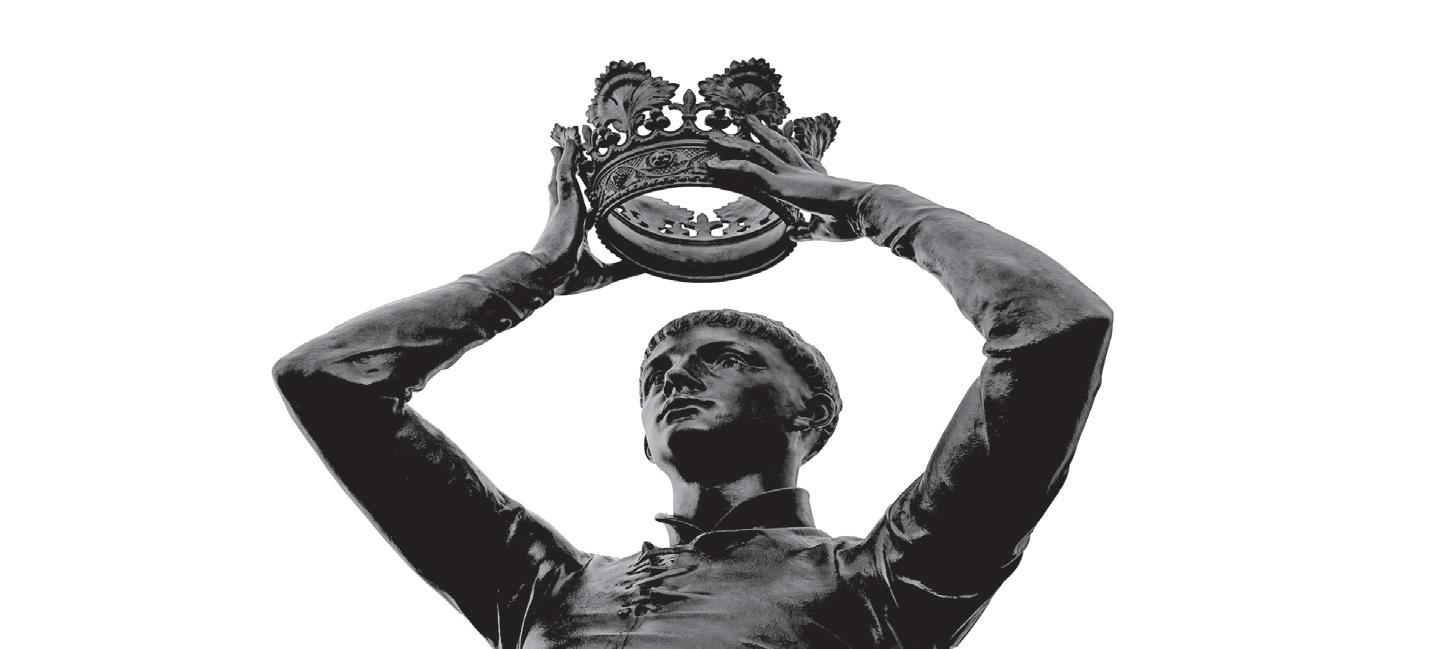
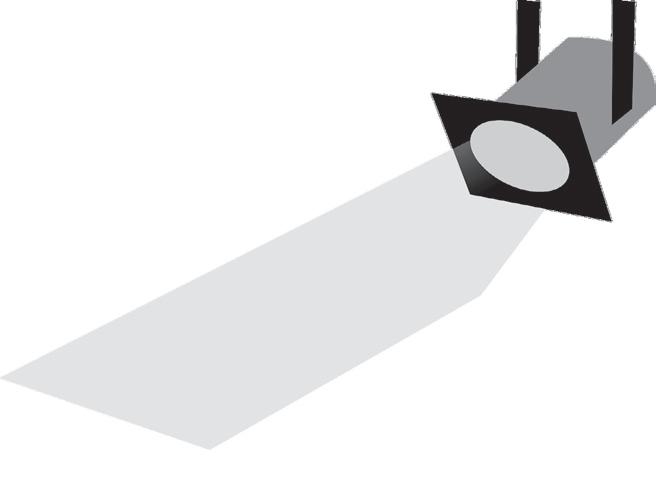
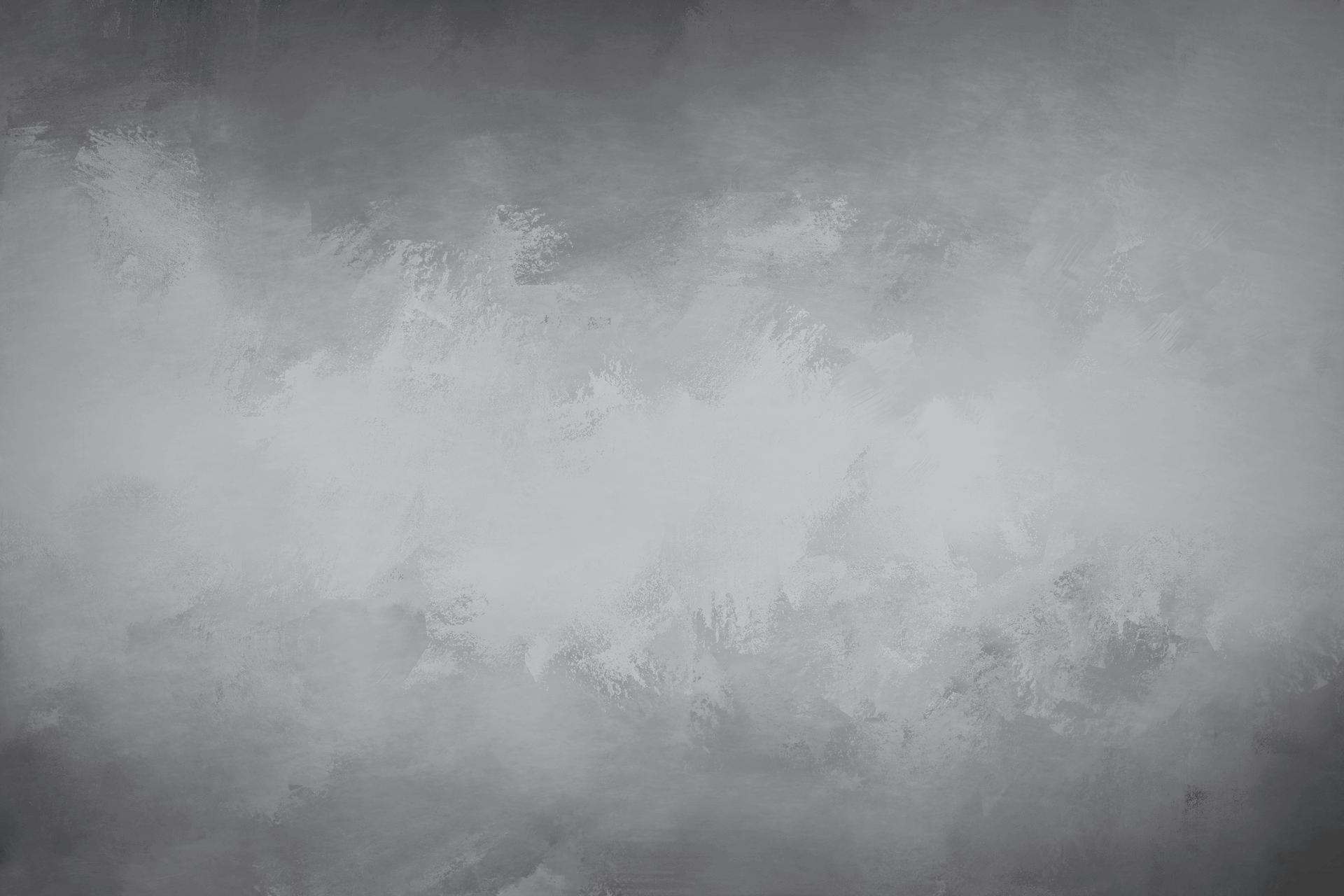
tage (AFTL ) per formed s hakespeare’s tragedy of “ m acbeth” at Washington h all on o ct. 5, 6 and 7. d uring his life, s hakespeare knew the actors he was writing for. While today’s actors cannot directly collabo rate with s hakespeare anymore, AFTL s still aims to work with him.
The fascinating part about watching AFTL s is seeing the five-cast company take on multiple roles. Portraying a multi-faceted s hakespearean character is an accomplishment, and AFTL s ac tors portray multiple roles. The production of “ m acbeth” gave me a deeper appreciation of the art form this company is seeking to accomplish.
They imagine the reality of the theater s hakespeare performed in and bring this to light. Their creative liberties are chosen for distinct reasons. In “ m acbeth,” these creative liberties provided a contrast to the storyline. “ m acbeth” is not solely the tragedy of a power-hungry man who chooses to commit murder to fulfill the three witches’ prophesy. It has comedic moments and actors who wish to interact with the audience.
e ach of the cast members mastered the subjects they were playing. r oger m ay as m acbeth brought about the hesitation m acbeth felt about killing
bers, AFTL s uses props to reflect which charac ter the actor is portraying. In the scene where Lady m acduff (Anne o deke) is murdered, one of the murderers is also played by o deke. Annabelle Terry, who plays Lady m acduff’s son, holds up the cloth that is Lady m acbeth’s distinguishing prop. The scene of the two murderers fighting and kill ing a cloth was highly humorous, especially amid a tragic scene. The scene with the drunk porter (Annabelle Terry) incorporated the use of props, enhancing the humor of the scene. In this scene, Terry also interacted with an audience member. In s hakespeare’s time, the audience and the actors had a relationship in some ways. Terry appeared in both “ m uch Ado About n othing” in January and the “ m acbeth” production in o ctober. Terry’s acting as b anquo was exceptionally well done, es pecially when b anquo is a ghost.
The cast also included Kenneth b ranagh, who starred in s hakespeare documentary “All is True” and appeared in the s hakespeare films “ h enry v,” “ h amlet” and “ m uch Ado About n othing.”
The shift of m acbeth is brought about through Lady m acbeth ( c laire r edcliffe). r edcliffe and m ay’s performance showed audience members
audience. Lady acbeth’s original girl boss, gatekeep and gaslight persona was brought out in her scenes. r edcliffe showcased this aspect of her character and the emotional fragility she feels at the end. r edcliffe also played d onalbain, r oss, Fleance, s econd Witch, Young s iward and m essenger. Playing Lady m acbeth and one of the witches is a powerful combination. Through their actions, the witches and Lady m acbeth this play’s tragedy.
Treason is what causes m acbeth to gain the title of “Thane of c awdor” and to lose the title of King. It is treason that gives m acbeth power, but trea son that takes it away. m acduff ( m ichael Wagg), the man who is not borne of woman, stops the ty rant. The actors brought s hakespeare’s pages to light in the way it was meant to be performed.
Contact Rose at randrowich01@saintmarys.edu
“Macbeth”
Starring: Roger May, Anne Odeke, Claire Redcliffe, Annabelle Terry, Michael Wagg
Produced by: Actors from the London Stage

DOES REMARKABLY WELL”
the heir to the throne of King follows a troubled existential journey in search of the meaning of life. Told by a theatrical troupe, the saga is led by a Leading Player and the music of s tephen s chwartz, author of “Godspell” (1971), “Wicked” (2003) and winner of o scar, Grammy and Golden Globe awards.
A narrative ensemble invites the audience to immerse themselves in the magic of theater and accompany the vicissitudes of Pippin’s turbulent life. In a journey of self discovery, he faces bat tles, experiences power, simplicity and love.
It is a musical with a lot more substance and layers than one might originally assume. “Pippin” is a cynical comedy that features an absolutely modern protagonist, full of doubts and ques tions and with an existential void that can never be fulfilled. s o much so, it has been dubbed the “ h amlet” of musicals. h e rejects old cliches and breaks with some traditions of the genre. As if that were not enough, it takes up the idea of the “theater of life within the theater of stage” and
dragging, and the writers inserted reflective songs without much narrative development to compensate. The jokes grew overused and crude, distracting from the uneventful plot.
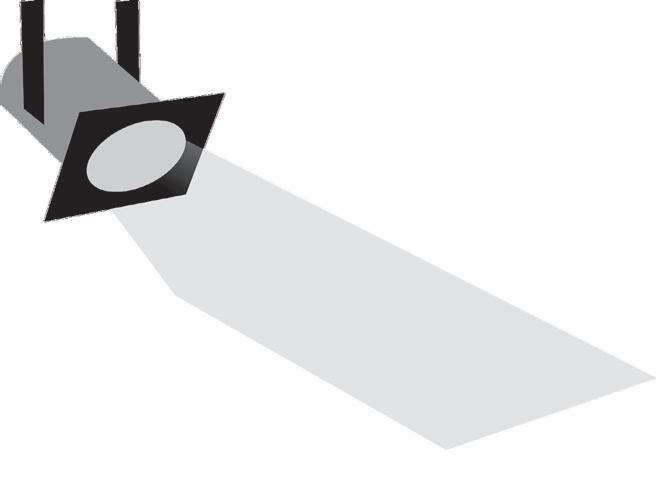
I am glad, however, that n otre d ame students managed to make my second experience of the show considerably more enjoyable. d irected by senior n ick b uranicz, the department of Film, Television and Theatre developed a youthful and animating production. Although I had originally taken a more moderate liking of the play, n otre d ame’s “Pippin” earned 5 out of 5 shamrocks.
The actors were comical and idiosyncratic without being overbearing — except, of course, for the one character who is meant to be domi neering, the brilliant and hilarious c harlemagne (Timothy m erkle). Pippin himself ( c arlos m acias)
pecially vibrant as she led the audience through o Time at All,” and c atherine (Kate Turner) taught the audience the value of simple pleasures with her agreeable disposition. The scenes balanced the humor and philo sophical weight of the show. d espite its great comedic moments, this version of “Pippin” seemed less rough and more principled.
The cast of “Pippin” gave the ending its proper meaning, which is, of course, memorable for its rejection of the desire for extraordinary pyro technics in life and the exaltation of the menial and familiar.
c horeography was marvelously executed, with much color and vivacity. Further, the set was also innovative, using gymnastics mats to construct each fluid scene. The rapidness and large-scale transitions with these mats were nothing short of impressive. The costumes were well-suited, given the unique and lively nature of the show.

Happy Birthday: Balance and equality are the goals this year. Assess your assets, liabilities and relationships, and put a plan in place that will motivate you to make transitions that lead to a life with less stress and drama. focus on discovering what makes you happy and pursuing the life and routine you feel comfortable maintaining. Choose health over money. your numbers are 4, 15, 23, 26, 32, 38, 47.
ARIES (March 21-April 19): Clouding issues or leaving out essential information will set you back. If you want to change, offer incentives and a well-laid-out plan that promotes what you want to pursue. Discipline, patience and kindness will help you gain support.
TAURUS (April 20-May 20): Push forward with a positive attitude, and you’ll bolster your chance to advance. listen to what elders and experts say and watch what they do to maintain their status and reputation. good teachers will provide what you need to survive and thrive.
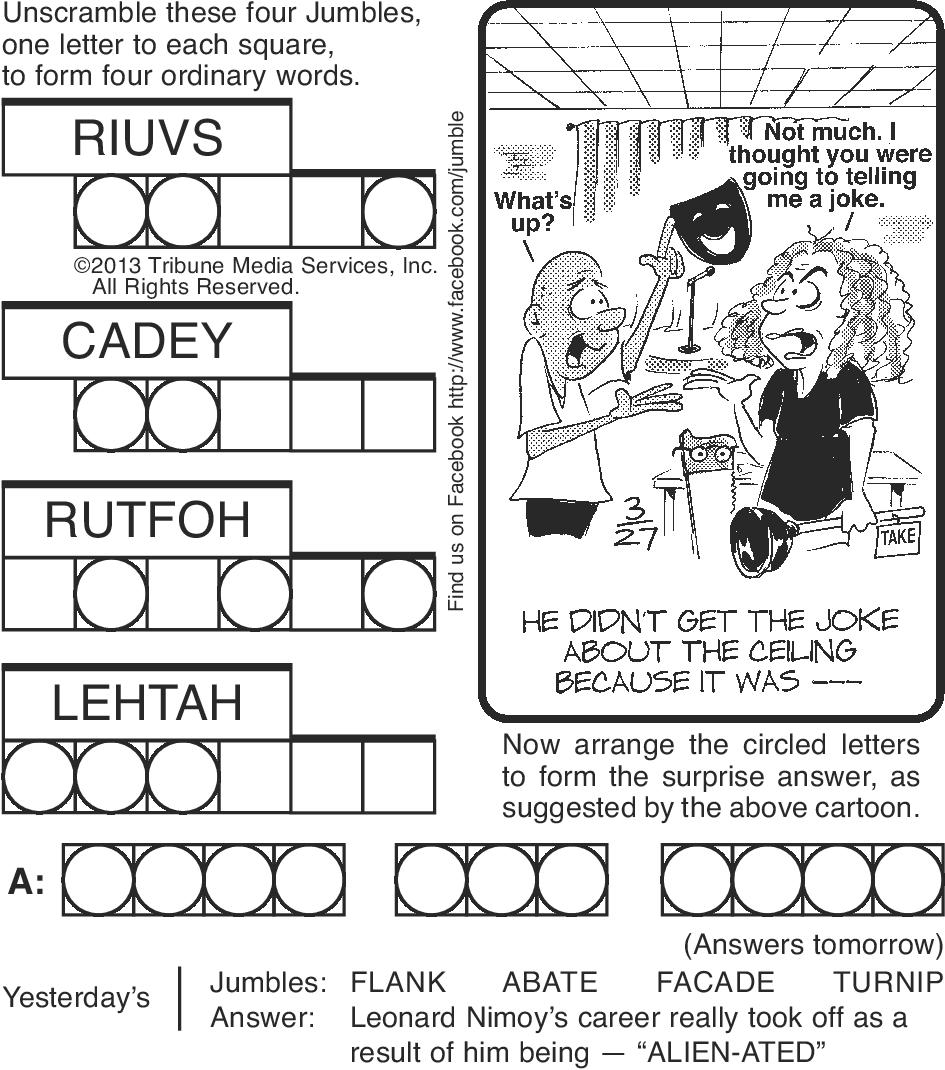
GEMINI (May 21-June 20): Something doesn’t add up. you’ll be missing information that’s vital to pressing decisions. Meet with experts to discuss your options and focus on where your time and effort are valued most, and you’ll find a way to use your attributes suitably.

CANCER (June 21-July 22): Discipline and well-thought-out plans will help you dismiss any problem that comes up at home or work. look at the big picture and discuss options openly with anyone involved, and you’ll discover you have help executing and maintaining your intentions.
LEO (July 23-Aug. 22): Put your emotions out of sight and deal with the changes around you astutely. Ask questions and find out where you stand and how to use your skills, knowledge and insight to outmaneuver anyone standing between you and achieving your goal.
VIRGO (Aug. 23-Sept. 22): keep up with what’s trending. having an open mind, embracing new technology and making yourself aware of what’s going on around you will help you inch your way forward. There is power in speaking up and negotiating peacefully. Meetings and educational pursuits are favored.

LIBRA (Sept. 23-Oct. 22): An unexpected change will throw you off guard. Don’t let confusion cost you emotionally, physically or financially. Pour your energy into maintaining equilibrium and carrying out your responsibilities; personal gain will be yours. Pay attention to health and relationships.
SCORPIO (Oct. 23-Nov. 21): keep a close watch over unstable situations and people who are unpredictable. look for cost-efficient ways to expand your interests without going into debt. Think big, but do only what’s necessary. It’s up to you to incorporate change.
SAGITTARIUS (Nov. 22-Dec. 21): rally around people who show interest in what you are doing and extend the same in return. Be open about what you can contribute and the part you want to play in any scenario you encounter. Be the driver, not the passenger.
CAPRICORN (Dec. 22-Jan. 19): Organize your thoughts and plans, but don’t share too much information with others. Distance yourself from anyone who exaggerates or shows signs of overindulgence. Be true to yourself. Protect against illness and injury.
AQUARIUS (Jan. 20-Feb. 18): ISit tight. Don’t feel the need to make a move because someone else takes a leap of faith. Bide your time and concentrate on personal growth, saving money and sticking to facts. romance and home improvements are encouraged.
PISCES (Feb. 19-March 20): reach out to people you look up to for advice. Discussing your options with an expert will help you decide what to do next. Be aware of someone who has ulterior motives or tends to make decisions for you. rethink your current situation.
Birthday Baby: you are appealing, playful and persistent. you are affectionate and intellectual.
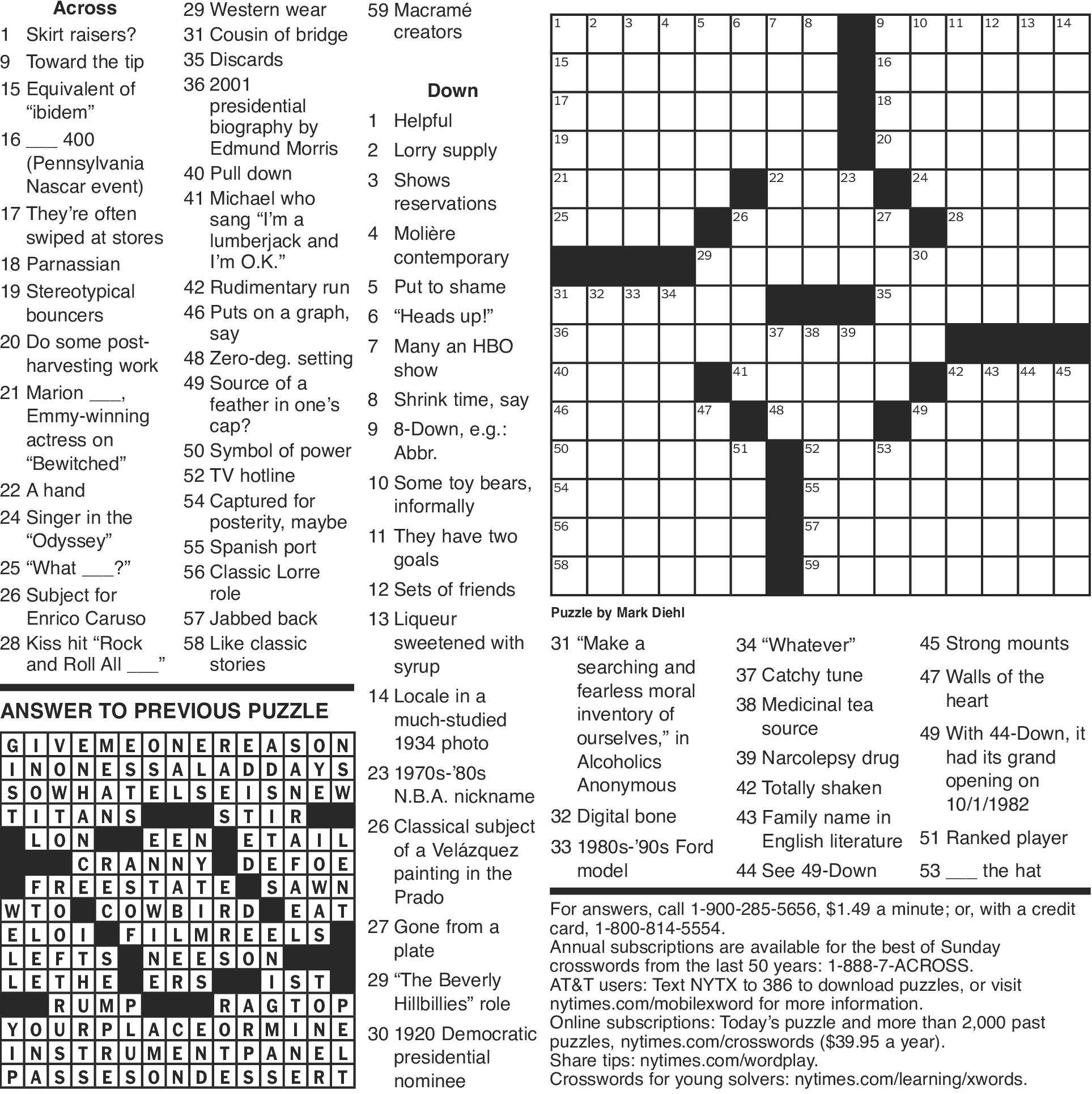
Top 5 games of Week 7 college football
Joseph Tunney WriterConference play is in full swing across the na tion, and the matchups are getting better and bet ter. This week will reveal a lot about the SEC, Big Ten and Big 12 races with some crucial matchups. Let’s get into it.
5. No. 7 uSC @ No. 20 utah, 8 p.m., FOX, utah -3 USC and their high-pow ered offense goes to RiceEccles Stadium to take on Utah.
The Utes recently got run over on their trip to play UCLA, the other PAC12 school in Los Angeles. Leading up to last week’s game, the Utes were riding high, but now they face a pivotal battle to see if they are still in contention for the Pac-12 champion ship. Utah’s defense has to have a better perfor mance against USC than they did against UCLA, in which they allowed over 300 yards and four touchdowns to Dorian Thompson-Robinson.
This summer, the Pac-12 did away with conference divisions, meaning the top two teams will make the championship at the end of the regular season. USC has playoff aspira tions, and the road to the CFP would be much hard er with a loss.
The USC defense showed its mettle last week in a 3014 win over Washington State. USC has a complete offensive attack as well, and running back Travis Dye is running at his best level this season. Wide receivers Jordan Addison and Mario Williams give quarterback Caleb Williams no shortage of targets.
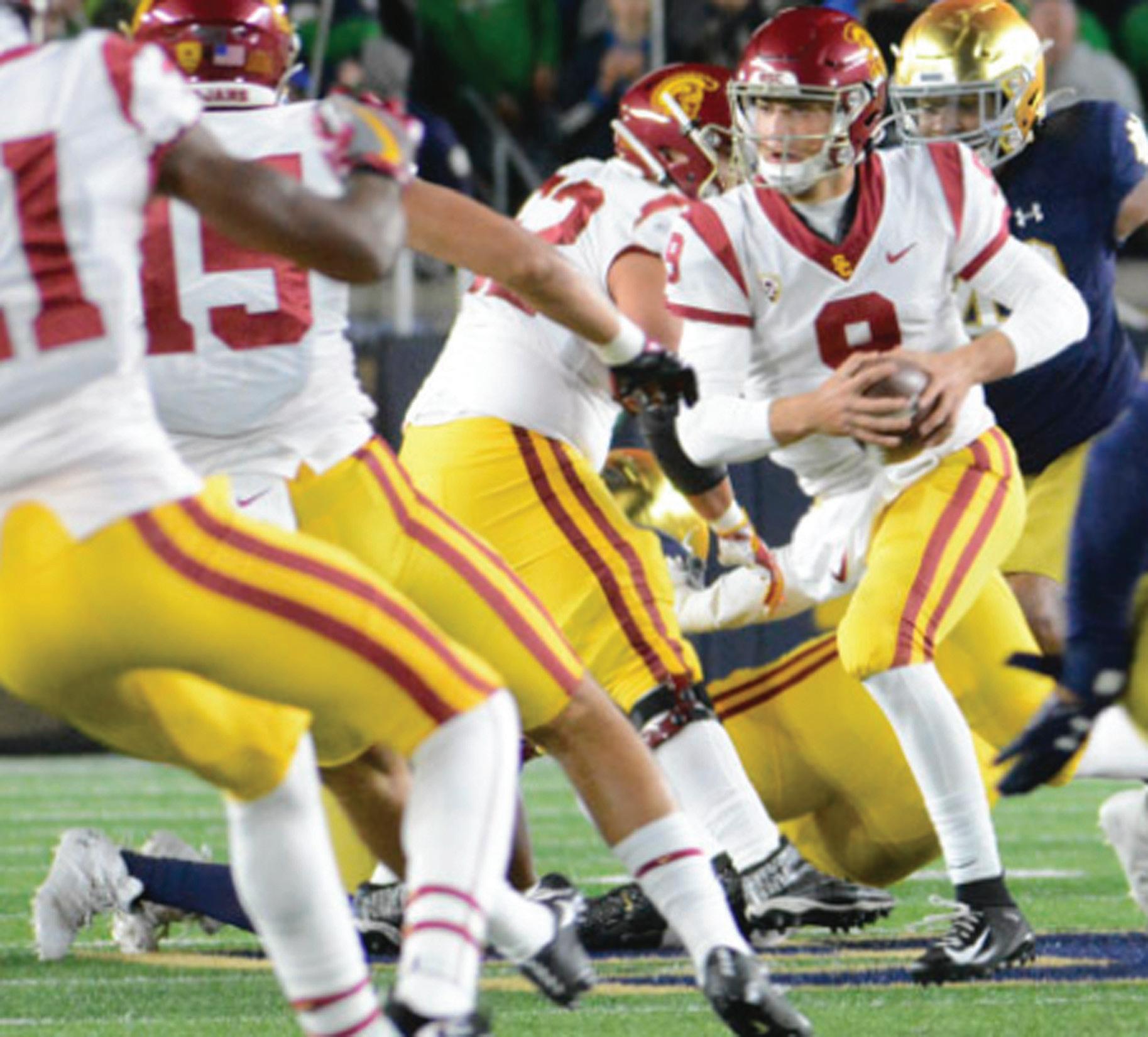
The PAC-12 has a repu tation for destroying its playoff chances in confer ence play.
Will it continue this season?
4. No. 15 NC State @ No. 18 Syracuse, 3:30 p.m., ACC Network, NC State -4 Syracuse is undefeat ed? In October? In foot ball? Surprisingly, yes. Syracuse is 5-0 for the first time since 1987. In a make-or-break season for head coach Dino Babers, the Orange have come through. Predicted to fin ish last in the ACC, the Orange have had crucial victories over Purdue and Virginia in their spring through the first half of the schedule.
Babers has seemingly heard the cries for him to be fired, and the start to this season have quelled the flames.
Running back Sean Tucker has looked like a game-changing play er, perhaps even a darkhorse Heisman candidate. In their 59-0 romp over Wagner, the teams agreed to shorten the third and fourth quarters, so that the game could mercifully come to an end.
NC State represents the toughest challenge for Syracuse so far. NC State needs the win to be seen as a legitimate contend er in the ACC, after los ing handily to Clemson. Quarterback Devin Leary and the Wolfpack offense has put up points this sea son, and the indoor en vironment of the Carrier Dome is conducive for of fensive success.
Can Syracuse continue their Cinderella season? Or, will NC State prove their strength?
3. No. 8 Oklahoma State @ No. 13 TCu, 3:30 p.m., ABC, TCu -2
The top-ranked teams in the Big 12 face off af ter two emotional wins. Oklahoma State squeaked by an upset-minded Texas Tech last weekend, and TCU went on the road and beat a resurgent Kansas team.
For the Cowboys, Spencer Sanders has been a high-level quarterback. The fourth-year starter had three touchdowns last weekend and is reading defenses extremely well. Bryson Green was Sanders’ favorite target, catching 5 passes for 115 yards and a score. The Cowboys out scored the Red Raiders 21-7 in the second half, pulling away for a 10-point victory.
TCU overpowered Kansas through a stel lar outing from quarter back Max Duggan and the emergence of wide re ceiver Quinten Johnson. Johnson had over 200 yards receiving, and the Cowboys defensive staff will have to have a special game plan in mind to stop him from taking over the game.
TCU is 5-0 for the first time since 2017 in a sur prising season, the first under head coach Sonny Dykes.
Duggan and offensive coordinator Garrett Riley have built an offensive at tack that could be the best in the Big 12.
TCU was predicted to
finish seventh in the Big 12.
Can they keep proving the pundits wrong? Or will Oklahoma State take an other step forward in their potential playoff bid?
2. No. 10 Penn State @ No. 5 Michigan, Noon, FOX, Michigan -7.5
The titanic game in the Big Ten this weekend is in the Big House, as two un defeated programs face off to help decide the Big Ten East. Michigan is com ing off of a 31-10 win over Indiana, but the score is deceptive.
Michigan was tied 10-10 at halftime, but a 97-yard drive in the third quarter helped the Wolverines pull away.
Michigan’s defense also stepped up, allowing just 29 yards in the second half.
Penn State is 5-0 and com ing off of their bye week, which they needed after a sluggish performance against Northwestern. Quarterback Sean Clifford has done just enough to win games for the Nittany Lions, but the Michigan defense represents a new challenge.
Last week, the Wolverines sacked Indiana seven times.
Last year, both teams played an extremely close
game, with a late Michigan touchdown marking the difference.
Fox will host their Big Noon Saturday pregame show, their fourth straight week at a Michigan game. Quarterback J.J. McCarthy, running backs Blake Corum and Donovan Edwards and wide receivers Ronnie Bell and Cornelius Johnson headline the multifac eted Wolverine attack. Michigan’s offensive line has been stout, establish ing themselves as one of the better units in the country.
This is a game that isn’t technically a rivalry, but one that always has huge national implications.
1. No. 3 Alabama @ No. 6 Tennessee, 3:30 p.m, CBS, ‘Bama -8
Alabama is one of the top teams in college foot ball, but they look differ ent from years prior in one important aspect: they look mortal.
In the second week of the season, Texas took Alabama down to the wire, eventually losing a onepoint game.
Last weekend, a Texas A&M team that has strug gled at key points made Alabama fight to the last play.
The Aggies’ pass was
incomplete, so the Crimson Tide are still un defeated and in the driv er’s seat of the SEC West.
Tennessee has looked surprisingly good and could potentially chal lenge Georgia and Alabama in the race for the SEC crown.
Last weekend, Tennessee obliterated LSU on the road.
Hendon Hooker shined again at quarterback, and the Volunteers are off to their best start since 2016. The top-10 showdown reaches another level when you factor in the rivalry.
Every third Saturday in October, the Crimson Tide and the Volunteers battle for what has historically been a huge game in deter mining the SEC champion. Tennessee desperately needs a win in the series. They have lost the last 15 matchups.
The winner of the game gets to smoke traditional victory cigars.
Can Tennessee win for the first time in the Nick Saban era? Or will Alabama continue their dominance over their rival?
Contact Joseph Tunney at jtunney2@nd.edu.
The views expressed in this Sports Authority are those of the author and not necessarily those of The Observer.
The notre dame women’s basketball team is locking in as they prepare for out-ofconference play to start next month. Their season opens on nov. 7 versus northern illinois.
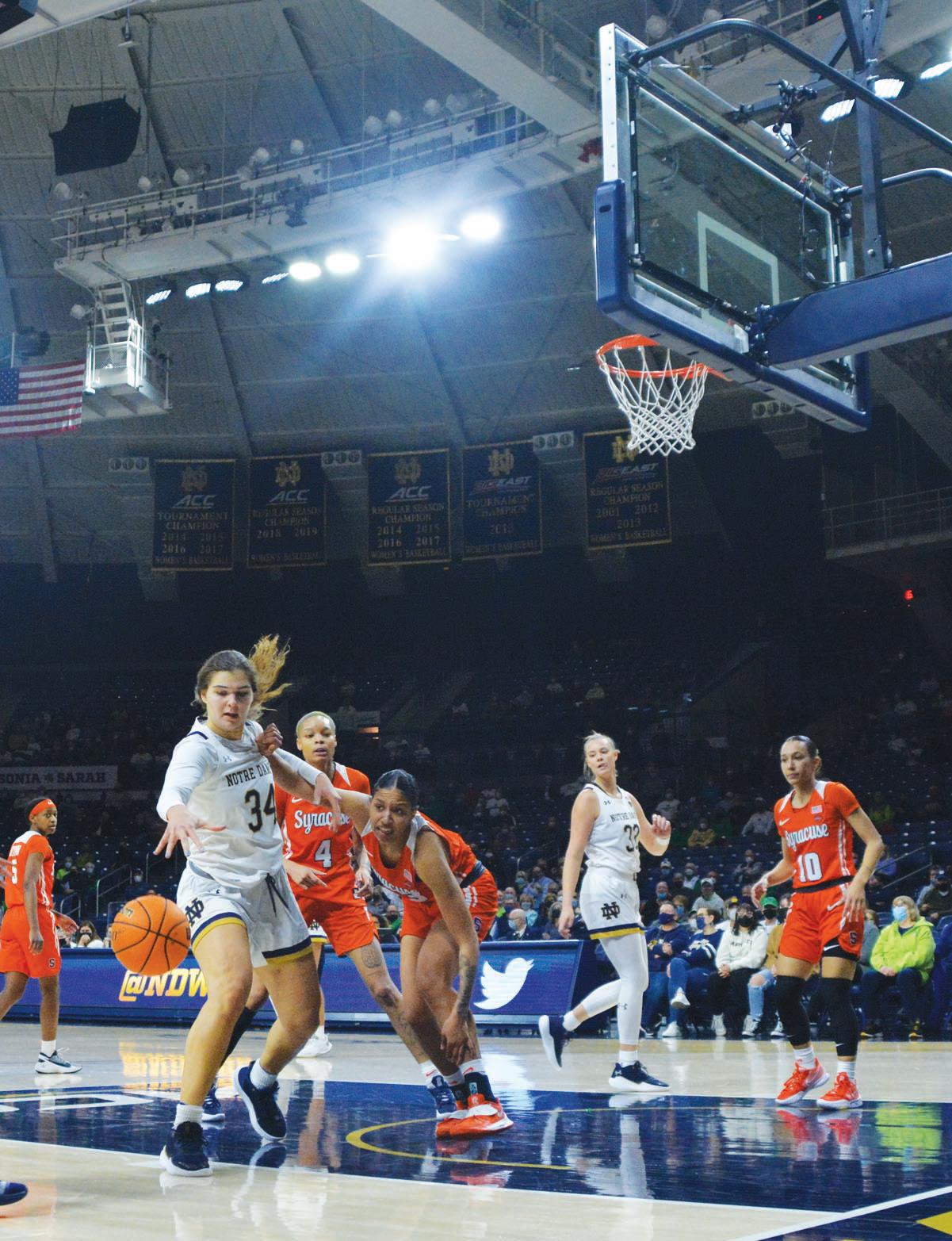
notre dame’s season was cut short last year in a heart breaking sweet sixteen loss to nc state. This season, the team is determined to build upon their performance. head coach niele ivey spoke about how last year’s loss is motivating the team this season.
“it’s something that’s al ways gonna be in the back of their heads. it gives them a chip on their shoulder. They know how good they can be, they showed it last year, so it’s about raising that standard, raising that expectation every day.”
The players themselves help their teammates meet these high expectations by hold ing each other accountable as well as cheering each other on. Players frequently exchange high fives during practice, but they don’t hesitate to offer criticism either. sophomore guard sonia citron spoke about the importance of this practice.
“i’ll get on my teammates if they’re not working hard, just like they’ll get on me, and its not personal, it’s just what we have to do to get better.”
The irish lost to nc state in the sweet sixteen by only three points, one of six losses last year that the irish lost by five or fewer points. in such
i rish bring on four transfers, hoping for successful season
close games, effort and disci pline are often the difference maker. a s they prepare for this season, notre dame is focusing on limiting mistakes in order to win those close games.
“every single practice we work on attention to detail and not making those silly lit tle errors that can cost us that game,” citron said. coach ivey and the rest of the notre dame coaching staff also help their players emphasize these details fre quently during practices, re minding players to sprint at full speed or “finish the first one” when a player misses a layup. This type of attention to detail in practice will help the irish convert narrow loss es into wins this season.
incoming recruits will be crucial to notre dame’s suc cess this year. The irish lost five of last year’s players, in cluding four who transferred to other programs. The team is filling their places with four new recruits.
Guard KK bransford from cincinnati, oh, the only freshman joining the team, earned ms. ohio basketball the past two years and is the seventh-ranked guard in her class. she has transitioned well to college so far, compet ing against older girls in prac tice and playing great man defense.
citron spoke highly of bransford’s abilities.
“even though she’s so young she is so talented,” citron said a long with bransford, three transfer students are joining the irish. Graduate transfer guard Jenna brown joins the
irish from stanford, where she won a national championship in 2021.
coach ivey believes that “playing with that champion ship caliber helps.”
brown’s presence on the team brings experience to a team of young players. brown underwent knee surgery two seasons ago and is currently practicing in a brace; how ever, she is moving well on the court and is expected to be a useful addition to the notre dame squad.
Fellow graduate transfer Lauren ebo, a center from the University of Texas, earned big 12 a ll-Tournament Team and a ll-big 12 honorable mention accolades last year. Tall and strong, ebo can score and rebound at will from the post. her size gives the irish an advantage, both because she is difficult to guard and also because her teammates are able to practice against a tougher opponent than they will usually face in games. a long with dominating on the court, ebo is also a vocal lead er both in practice and in the locker room. coach ivey said she can rely on ebo to use her voice and experience to help her teammates.
ebo also plays well with ju nior forward Kylee Watson, who joins the irish from oregon. Watson, who led the ducks in shooting percentage last year, says she loves “being on the floor when ebo just can go to work.”
This type of positive team dynamic will be important to notre dame’s success this year. culture is essential to any successful program, but
especially one where four out of nine scholarship players are brand new to the program. Watson said that the smaller roster has actually helped the team bond.
“it’s so much easier to build chemistry when you have a smaller roster … hanging out outside of basketball and just being close, obviously that plays a role in how much we trust each other and want to play for each other.”
The positive team culture is
obvious as you watch the irish joke around while stretching and as they exchange person alized handshakes before the start of practice.
The team looks cohesive and disciplined, and they’re having fun on the court. This is a notre dame team that is prepared to take the irish to another Final Four.
Contact Sammie McCarthy at smccart@nd.eduher assertiveness as her time with the team grows.

“ i ’m a pretty introverted person. s o it’s definitely a challenge for me to use my voice and speak up in that leader way … b ut i definitely can work on im proving my voice overall, on and off the court.” a nd while m iles’ selfadmitted introversion made her development as a leader particularly task ing, she possesses traits that show why she’s wellsuited for the role. a lways playing with passion on the court, m iles touched on how her emotional game can help her connect with a team that at many times has been sparked by her fiery play.
“[ e motion] is a big part
of our team,” m iles said.
“ i feel like we’re all pretty emotionally driven, tap ping into the way that our teammates need to be led. a nd i feel like high or low, we’re always in vested emotionally into one another. That’s a part i do need to grow in … e motion is very impor tant, but i feel like more mentally with these girls, talking and getting their heads right before games, is super important”
Leaning on her on-court experience to influence her off-court efforts, m iles also touched on how n iele i vey, a former i rish guard herself, has mentored her as she moves into a more vocal role. “ i feel like [ i lead] by example … c oach i vey tells me that all the time; just be an example for others to follow. i t can help them really imple ment themselves into the
system quicker.”
Ultimately, m iles em phasized that one of the team’s greatest strengths heading into the season is that it shouldn’t be a hard lineup to lead. a con densed i rish roster (only 12 players are rostered heading into the season, down from 15 in i vey’s first season as head coach) thrives on chemistry and a tight-knit off-court bond.
“ i think this team is the closest that i ’ve ever been to any team in my life,” m iles said. “We just hang out with each other all the time, on and off the court. i think the experience is really starting to help us … e xperience is help ing us perfect our system, knowing each other on the court and improving our chemistry.”
i rish head into must-win match against duke
By ADAM AKAN sports WriterThe Fighting i rish men’s soccer team suf fered a 2-0 loss to n o. 11 Louisville at home this past s aturday, a defeat in which the i rish took three times more shots and four times more corners than the c ardinals. The i rish maintained the major ity of possession and con trolled much of the flow of the match too. b ut, the i rish failed to convert on their many prime scor ing chances, a problem which has plagued them all season.
The i rish hope to get back on track in their next match against the d uke b lue d evils, but the bat tle will be an uphill one. d uke is currently ranked third in the country, with a record of 8-0-3. The b lue d evils have several results which demonstrate their dominance this season, including a 2-1 win over Louisville on the road and a 3-2 win against n o. 10 Wake Forest in Winstons alem. They tied v irginia in a 0-0 deadlock away from home as well.
The b lue d evils and the i rish have shared only one common win thus far this season, over the b oston c ollege e agles. b oth teams defeated the strug gling e agles at home, with
d uke prevailing 1-0 and the i rish claiming victory with a score of 2-1.
The primary concern of the i rish going into s aturday night’s match up will be the struggling offense.
d espite a talented ros ter, and one of the stron gest freshman classes nationwide, the depar tures of key players from last year’s side have shown when the i rish attack in the final third of the pitch. s hots have not resulted in goals for the team, either through a lack of clinical execution or poor luck. n otre d ame currently ranks towards the bottom of the acc in key offen sive metrics and have gone scoreless in their last two matches.
This is not to say the Fighting i rish have no business taking the field with the undefeated b lue d evils. The i rish have seen positive trends in their last two losses, and categorically controlled both matches against the h oosiers and c ardinals. m aintaining possession, formation, composure and building up attacks have not been areas of concern for this squad. i t was the i rish team’s proficiency in those fields that brought them key conference wins against v irginia and b oston c ollege.
d uke will represent the greatest remaining chal lenge for this team, but that is not to say the i rish have no chance. i f the pieces fall in the right way for n otre d ame, they can be competitive with any side in the country.
With only five match es remaining, two of which are out of confer ence match-ups, it ap pears more likely the i rish will not nab a bid into the ncaa m en’s s occer Tournament through an at-large selection. The only path for the i rish to return to the bracket now, it would seem, would be to claim the acc conference championship. Winning that title will require a great shift of momentum for this team and an end to the results that contin ue to not go n otre d ame’s way.
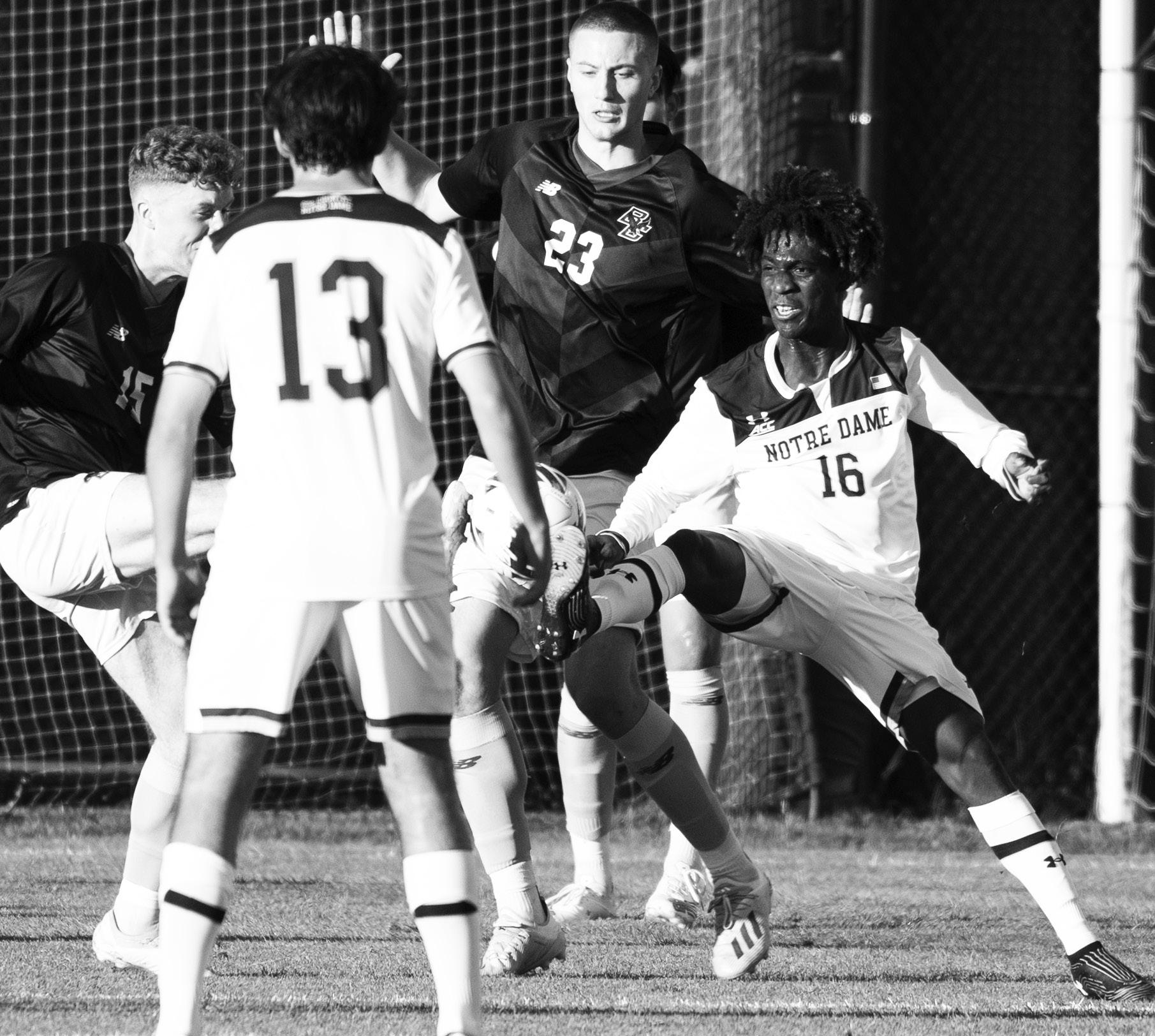
a statement win against a strong team like the b lue d evils could be the perfect catalyst. h ead coach c had r iley and his players cer tainly hope they can make that sentiment a reality.
The i rish will take the field against d uke at 6 p.m. e astern time at a neu tral site in d urham, n orth c arolina. The game will be streamed on the acc n etwork.
Contact Adam Akan at aakan@nd.eduJoubert
and state championships.
The i Y h L was not only my upbringing as a player, but it was my upbringing as an announcer.”
a s Joubert began to progress as an announcer, he began to get noticed by some n otre d ame staff.
“ m olly [ m ahoney, the c ompton a rena program ming and events program coordinator] had men tioned to me that there might be an opening eventually for a couple of games to be a substitute.”
Joubert was brought to a game as a trial run against m innesota d uluth.
“They were getting ready to play m innesota d uluth. i think it was that year. They gave me a pregame script from the m innesota d uluth game, and unbeknownst to me at the time, they had peo ple all over the arena hid ing out, and apparently, they gave [ n otre d ame] a good enough review.”
Joubert worked as a backup for a few games in november of 2012, covering the games against his alma mater Lake superior state.
The hardest part of the job is pronunciation, ac cording to Joubert, and something he strives to get right every single time.
“You may only get one chance to say a kid’s name. a nd you want to get it right. b ecause you don’t know if their family is in the stands.”
a s he sits from his usu al spot in the media box, Joubert looks over the ice, reflecting on his career. i f you were to tell his 7-yearold self, the one who un knowingly set himself down this path, what his
job has become, he would be in total awe.
“ s even-year-old me would say, ‘You have the greatest job at the great est school to work for, in my opinion of one of the greatest college coaches that has ever coached. You get to watch great hockey. i t’s the students, it’s the band, it’s great college hockey,’” Joubert said. “When you work in a place like n otre d ame, like c ompton, and this place is packed, that en ergy pushes you to be the absolute greatest you can possibly be.”
Joubert has seen a lot of i rish hockey during his time as the in-stadium announcer. d uring his time, he has kept a record of how the team has per formed in games he has called, and the i rish have a record of 113-68-16, 197 games in total.
Game 198 was against the U sa h ockey n ational d evelopment Program team o ct. 2. Game 199 will be this weekend against n orthern m ichigan on o ct. 14, and the signifi cant milestone, Game 200, will follow on o ct. 16.
Though Joubert has had an incredibly long and successful announc ing career, all he is, is grateful.
“ s eeing where i started to now, it’s just been an absolutely incredible ride. i n my opinion, it is more about the people that have helped me get where i am than the job that i do. i am not here without the help, the love, the faith, the constant positive energy that people who number in the thousands have given me.”
Contact Tom Zwiller at tzwiller@hcc-nd.edu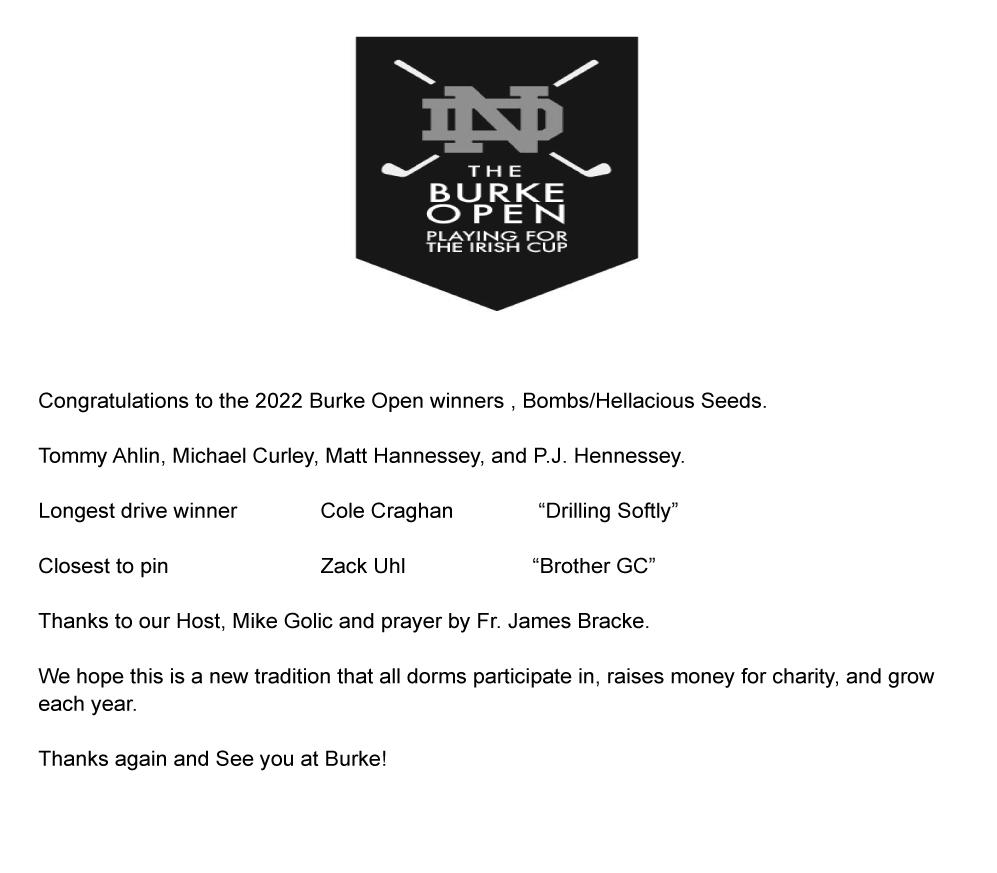
saints unable to continue win streak against roosevelt University
By OLIVIA SCHATZ a ssociate s ports e ditorh oly c ross men’s soc cer took the field Tuesday night to face off against r oosevelt University.
Going into the match, r oosevelt had a 5-5 record (4-2 on the road) and had a two-game losing streak.
c omparatively, the s aints had a 7-4-1 record, as well as a five-game conference win streak.
h owever, the s aints were unable to continue their streak, as they ul timately tied the Lakers 0-0.
a n early set of fouls on both teams set the mood for the remainder of the match.
Within 15 minutes, there had already been six fouls on the pitch.
b y the end of the 90 minutes, there were three yellow cards thrown, and a total of 31 fouls.
The first shot of the match would come in the
3rd minute, however the Laker’s r aul m ariscal would miss wide.
n ine minutes later, s aints’ senior midfielder a xel v alenzuela would have his turn to score, but r oosevelt’s keeper would save it to keep the game at 0-0.
The ball would then see multiple transitions to each end of the field.
r oosevelt first got off a shot, this time saved by sophomore keeper c laudio Fuentealba.
h oly c ross sophomore forward Kevin v idana followed with an attempt of his own, but the attempt went wide.
There would be two more shots, one for each team, before v alenzuela earned a yellow card for sliding into the keeper.
b y the end of the first half, the s aints and Lakers sat at 0-0.
h owever, the low scor ing did not reflect the action on the field.
h oly c ross fired four shots in the first period, and r oosevelt notched seven.
h oly c ross was off to a slow start in the second period. Within the 49th minute, however, the s aints would seemingly score.
h owever, the goal was negated due to offsides. This was paired with a yellow card against r oosevelt, the second card of the match.
s econds later, junior forward Gabe n yenka earned an opportunity via a header, but it was off target.
a fter this attempt, there were no more shots until the 62nd minute.
This time, it was se nior midfielder e lmin e jup, but he hit the crossbar.
a s the clock ticked, with no scoring, both teams grew more aggressive.
Throughout the second period, r oosevelt marked
Paid a dverT isemen T
six fouls, while h oly c ross had eight.
a r oosevelt corner kick in the 71st minute would give the Lakers a much needed scoring opportunity. h owever, with a foul called on r oosevelt, they were un able to execute.
i n the 79th minute, h oly c ross saw two con secutive shots produce no results.
The first by senior de fender e rick Zelaya was saved, and the second by e jup high.
b oth teams would fight to the end, and in the last minute of the game, a yellow card was pulled on the Lakers.
d espite both teams giving their all, neither team would be able to find the back of the net, and the match would finish as it started.
The s aints now look ahead to a game on the road against Trinity i nternational University.
The two teams have played 13 times since 2009 (playing twice in 2021).
h oly c ross has the slight advantage of 6-4-3 in the matchup, winning the past four games of the series.
The Trojans currently have a 6-5 overall record (4-3 conference), but are on a four-game losing streak.
o n s aturday, o ct. 15, head coach o mar Gallo looks to make this his 100th win with the program.
h owever, it will not be an easy game for the s aints, and they must bring their all if they want another win.
h oly c ross fac es off against Trinity i nternational University on s aturday at 3:30 p.m. e astern time in d eerfield, i llinois.
Contact Olivia Schatz at oschatz@nd.edu
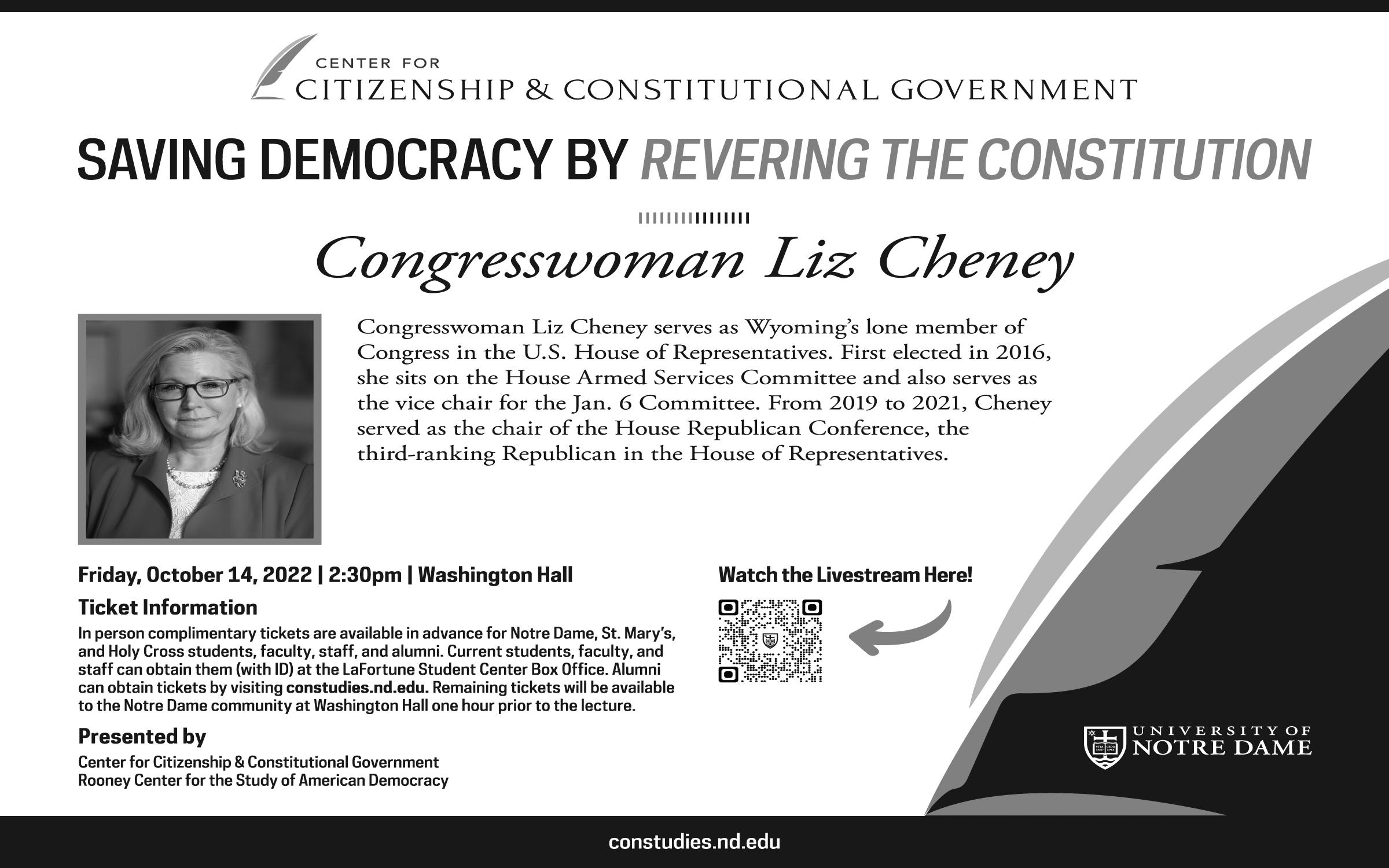
here comes JP Joubert
By TOM ZWILLER sports Writero ften heard but rarely seen, John-Paul Joubert (or, as he prefers, JP) impacts every single fan’s experi ence at the c ompton Family Ice Arena. And, if the name does not sound familiar, perhaps you would know him if you heard him say his iconic, “ here . come . T he I r I sh !” o r, you might recognize his reminder: “o ne minute remaining in the period.”
The in-stadium an nouncer has held his post for 10 years, dating back to the 2013-2014 season. And on o ct. 16, he will have an nounced 200 games for the Irish.
For as much as Joubert has become a part of the fabric of the n otre d ame h ockey experience, Irish h ockey impacted Joubert before he could even skate.
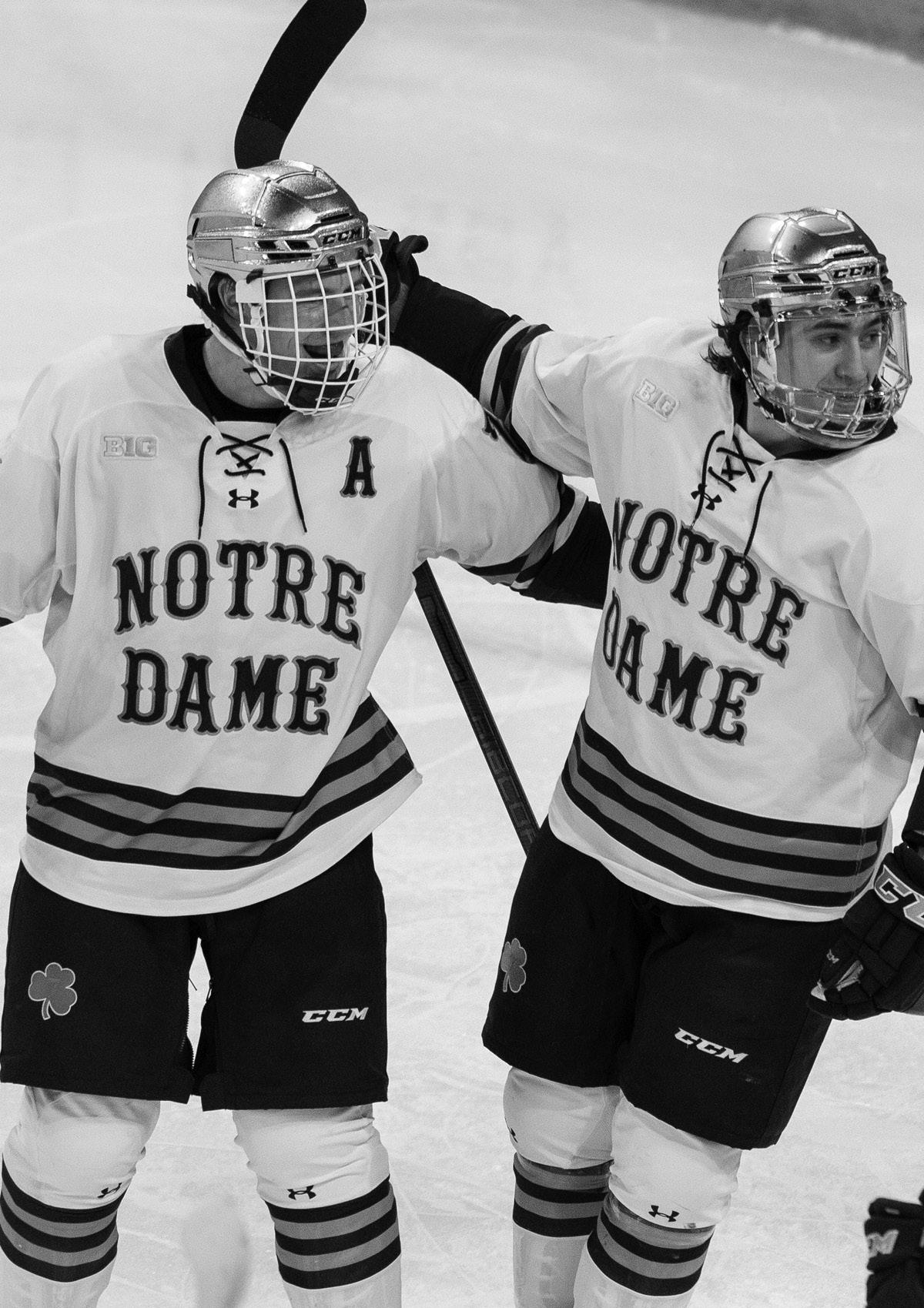
A s outh b end native, Joubert first learned how to play hockey in the old n otre d ame Joyce c enter Arena. h e learned to skate in the Joyce at 18 months old before playing his first
game at 3-years-old as a member of the Irish Youth h ockey League (IY h L).
In fact, Joubert’s first time making an in-game announcement happened at a youth game at the ten der age of 7 in the arena.
“I had been doing games from the time I was seven years old. m y dad would bring me to the rink and let me sit in the penalty box. e verything was done pretty much by hand over there. b ut I actually announced my first game, it was actu ally kind of a mistake.”
Joubert’s father stepped away from the penalty box while running a youth hockey tournament. Two penalties occurred, so Joubert grabbed the micro phone and made the call.
“ m y dad comes all the way from the other side of the area and is just scream ing, ‘I told you not to touch anything.’ b ut, one of the kids from one of the teams said, ‘ n o, that was re ally good for someone so little.’”
Joubert may not have known it then, but it was just the first of hundreds
of calls in an Irish hockey arena.
After that, he continued to play IY h L hockey be fore playing for the s aint Joseph h igh s chool team for all four years of his high school career. And while Joubert did not play hockey in college, he stuck around the game.
As a freshman at Lake s uperior s tate University, Joubert assisted a U-11 team as a goalie coach. h e then progressed to coach ing the women’s club team. When he graduated, he re turned home and contin ued coaching, both in the IY h L and at his alma ma ter, s aint Joseph.
In total, Joubert coached hockey for 25 years.
While Joubert began to build a coaching resume, he slowly worked on his an nouncing career. After his first controversial (at least to his father) call at seven, Joubert began to call high school hockey games.
“As I got older, I got to do high school games, even tually city championships
olivia m iles steps up, fills leadership void
By J.J. POST sports Writern otre d ame women’s basketball enters the 2022 season knowing what they’ve got in most key areas.
Their backcourt stable is headlined by one of the most impressive fresh men in the country last year: o livia m iles. n ext to her will be d ara m abrey, a fifth-year senior who has never missed a start at the collegiate level. c ombo guard s onia c itron offers a dream mix of ability in the post and adept perim eter play that head coach n iele Ivey has utilized impressively.
The front court is also impressive. m addy Westbeld averaged nearly 12 points per game last year, looking comfortable in all sorts of defensive matchups. A transfer pla toon of Lauren e bo and Kylee Watson adds addi tional pedigree to a unit that lost an anchor in the graduated m aya d odson. e ven 6-foot-5-inch
forward n atalija m arshall — who missed the last two seasons due to injury — is fully fit, with the former top-40 prospect adding yet another weapon to a well-rounded Irish roster.
n otre d ame is poised to build on an impres sive 2021 season with a core that’s well-suited to execute Ivey’s fast-paced and largely position-less game plan. b ut for all the on-court strengths and re turning talent, the ques tion that still needed to be answered over the offsea son was who would step up as the leader.
b etween the departure of m aya d odson to the W nb A and upperclass men Katlyn Gilbert, Abby Prohaska, Anaya Peoples and s am b runelle to the transfer portal, the 2022 Irish returned just one player of senior or elder status: d ara m abrey. The void left by d odson and company led to a young Irish roster with a lack of leadership that needed to be filled, and the natu ral fit for such a role was
o livia m iles.
m iles is no stranger to being a heavily involved member of the n otre d ame program, despite her short time with the team. As a rookie, m iles led the squad in assists by an eye-popping amount — her 244 dimes finished second best in the entire nation, and more than tri pled the second best num ber on the roster. s he also led the team in points, steals and minutes and was a permanent fixture in the lineup at every ma jor juncture.
b ut this season, her role on the team will expand past being an incredible floor general. m iles, now with a full season of col legiate experience under her belt, is poised to be a key leader for the Irish off the floor, as well.
m iles herself will tell you, from a personal ity standpoint, she’s not a natural fit for the role. b ut she’s strived (and contin ues to strive) to improve
